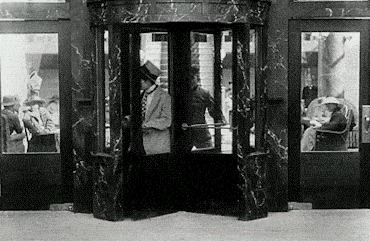PERU (II) ~ Qusqu
Peru, Qusqu ( Cusco ) ~ Heartland ~ jordskælv, dansende mure og salsa
” Peru er rig på natur og kultur, rig på diversitet, fugle, dyr, mennesker. 800 forskellige majssorter, 3000 forskellige kartoffelsorter, mennesker af forskellig etnicitet, verdensanskuelser, religion og sprog – men penge og BNP pladserer Peru blandt de fattigste lande i verden. Rigdommen ligger stadig i det oversete, som pauseringen i musik, i mellemrummet, i det uudtalte, det smidige, fleksible, tolerante, ikke-voldelige, i sammenfletningen af liv-jord-kosmos, den simultane tilstedeværelse af “de tre tidsdimensioner” sam-tidigt : “fortid – nutid – fremtid” – flettet sammen, som af lamauld, alpacca – spundet til tråd, trukket ud til kæmpefigurer, landart, der kun kan ses fra flyhøjde eller endnu længere borte … fra kosmos – trukket endnu længere ud, til den tyndeste tråd … til den usynlige tanke, som maler dyr og figurer i galaksens stjernekonstellationer – en ubrudt tråd, tyndere og finere end tanken, tankens tanke, som forbinder alt i kosmos med det jordiske liv. “
.
Fotografi og tekst, illustrationer og tegninger af Omar Ingerslev
PERU (I) Amazonas
https:/∆/www.nedersteetage.com/peru-i-amazonas/
PERU (II) Qusqu ~ Heartland
https:/∆/www.nedersteetage.com/peru-ii-qusqu/
PERU (III) Titikaka & Uru
https:/∆/www.nedersteetage.com/peru-iii-titikaka/
PERU (IV) Flettede tråde på tværs af tid og rum
https:/∆/www.nedersteetage.com/peru-iv-traade-paa-tvaers-af-tid-og-rum/
PERU (V) Machu Picchu
https:/∆/www.nedersteetage.com/peru-v-machu-picchu/
PERU (VI) Højlandet
https:/∆/www.nedersteetage.com/peru-vi-hoejlandet/
( remove ∆ and you got the full link )
.
.
The Inca people originated in the Cuzco Valley of what is modern-day Peru in about AD 1000, and gradually conquered neighboring tribes. The empire expanded rapidly under three Inca emperors between 1438 and 1527 until at its height it stretched from what is now the border between Colombia and Ecuador to central Chile—a distance of over 3,400 miles. At its height, the Inca people, who numbered only about 100,000, ruled from 10 to 12 million people from at least 86 ethnic groups with their own languages, traditions and religious beliefs. The empire encompassed wildly contrasting geographic regions, ranging from towering snowcapped mountains to coastal deserts to Amazonian jungles. The heart of the empire, centered around Cuzco, was located at such a high elevation that people unaccustomed to high altitudes suffered from altitude sickness, which includes headaches, fatigue, dizziness and upset stomach. The empire was often plagued with a variety of natural disasters, including earthquakes, volcanoes, droughts and devastating floods.
The Andes—the second highest mountain chain in the world—create an environment of extreme climate and weather conditions. Mountain ranges are created when continental plates slide under each other, creating pressure that lifts and squeezes the land above them, like a tablecloth being pushed up by a heavy plate. The mountain range was created over a period of millions of years, as the plate under the Pacific Ocean has been sliding eastward under the South American plate, raising the mountains and creating a deep trench off the coast. This constant grinding causes severe earthquakes. In the mountainous terrain, earthquakes can cause mud slides and avalanches. For example, in May of 1970, a devastating earthquake, followed by avalanches and mud slides, killed 70,000 people in the central Andes. The earthquake loosened a huge block of ice that caused a landslide which buried an entire town, killing 4,000 people. Periodic volcanic eruptions have also claimed the lives of thousands. The region’s climate is influenced by water and air currents that flow north from Antarctica along the Pacific coast. The ocean current, called the Peru or Humboldt Current, brings extremely cold but nutrient-filled water to the surface, supporting a rich supply of fish, birds and sea mammals. But the cold Peru Current causes clouds to release moisture before they reach land, creating one of the driest deserts in the world along the west coast of South America. The winds, cooled by the Peru Current, then warmed by the coastal plains, do not precipitate enough water to produce significant amounts of rain until they rise high into the Andes, where rain falls seasonally in the mountain valleys of the western slope. On the eastern slopes, on the other hand, equatorial winds blowing from the east over the Amazon River hit the mountains, cool, and produce large amounts of rain. The well-watered eastern slopes of the Andes support lush, tropical vegetation as they drop to the Amazonian basin. At irregular intervals, a warm ocean current runs south along the Peruvian coast, pushing the Peruvian Current farther west. This current, called El Niño, causes heavy rain in the desert coastal areas and drought in the southern Andes. In 1982, the worst El Niño in 100 years produced heavy flooding in coastal cities, destroying roads and irrigation systems, while drought in the mountains killed thousands of animals.
The Andes Mountains stretch from Colombia to Chile, creating three distinct geographic areas— the costa (coast), the sierra (mountains), and the selva (tropical rainforest). (See Handout 1: The Vertical Economy, page 24.) The costa is a narrow strip of land bordered by the Pacific Ocean to the west. One of the driest deserts in the world, it is crossed by many rivers that run down from the mountains and can be harnessed for irrigation. The western slope of the sierra is extremely dry. Between the two mountain slopes lies the altiplano, a dry, high-altitude plain in southern Peru and northern Bolivia. Areas at altitudes above 10,000 feet are called the highlands. The eastern slopes of the Andes, called the ceja de selva (“eyebrow of the rainforest,”) enjoy warmer, humid weather. The eastern slopes of the Andes have a montane cloud forest environment, due to a cool, misty climate that supports thick, low vegetation. To the east lies the selva, the beginning of the Amazonian rainforest.
Although the rugged Andes Mountains create extreme weather conditions and make transportation difficult, they have hidden advantages that Andean people learned to exploit. The difference in altitude between the peaks and valley bottoms can be as great as 10,000 feet (almost two miles!), creating wide variations in temperature and rainfall at different altitudes. The varying topography of the mountains creates a variety of ecological niches, which are zones stacked one on top of another where different types of animals and plants can survive. So, instead of having to travel hundreds of miles to arrive in a different climate, Andean people can walk as little as 60 miles to go from a tropical forest in the lowlands to the frozen tundra of the highlands. An Andean family group might make its base in the temperate quechua zone located in the highlands, where family members would grow maize, beans, garden vegetables, quinua (a high protein grain), potatoes and Asian grains such as wheat and barley. Some family members descend to the ceja de selva on the eastern slopes of the Andes to tend fields of maize, coca, fruit, pepper, and other staples. They can descend farther onto the plains of the Amazon forest to cultivate manioc, a root crop. They also maintain herds of llama and alpaca in the higher pasturelands. Plants with different planting and harvesting times can be grown at different altitudes. Various plots of land farmed by one family group might be two or three days apart by foot. This system, called a “vertical economy,” had many advantages in the harsh Andean climate. First, it gives a community access to a wide variety of foods and other products. Second, it protects them against the impact of harsh and unpredictable weather conditions—if frost or drought destroys the crop at one elevation, the community can fall back on the harvest in another ecological niche. Andean farmers also plant several (sometimes dozens) of varieties of one crop like potatoes in a single field so that at least some plants will survive the season’s unpredictable temperature and rainfall. Andean people developed a technique for food storage that actually turned their harsh environment into an asset. Living at altitudes of about two miles above sea level, they had as many as 300 nights of frost and heat from strong sunlight during the day. They used this combination of hot and cold to “freeze dry” meat and potatoes that were left outside to alternately freeze and dry over a long period of time. The Incas called the dried meat charqui. It lent its name to the dried meat we call beef jerky. Andean people also made chuño by softening potatoes in water and leaving them outside to freeze at night. During the day they dried in the hot sun. The freeze-dried foods could be stored in warehouses for several years and used during periods of drought or other natural disasters. The ability to store food was crucial, since frequent frosts, hail and drought often led to crop failures in two or three years out of four.
POTATO
The potato shows the most biodiversity, or genetic variation, of any food crop. Thousands of varieties vary by size and shape, as well as by their ability to resist frost, pests, disease and drought. Some types mature in a short time, a crucial factor at high elevations, where the growing season is short. Potatoes come in a variety of colors, from the familiar white and yellow to purple, red, orange or brown. Some potato varieties are carnivorous, meaning that they devour their prey. They produce a sticky substance that traps insects, which are gradually absorbed by the plant as the insects decompose. Another repels insects by giving off an unpleasant odor. While there are more than 200 wild potato species, all edible potatoes belong to a single species, called Solanum tuberosum. The potato was probably domesticated between 7,000 and 10,000 years ago in the Andes region, possibly in the Lake Titicaca area. The Andean people selected potatoes with desirable characteristics and cross-bred them over time to develop new varieties that thrived in a variety of conditions. They developed different potato varieties that could tolerate the semi-arid conditions of coastal valleys. Some flourished in subtropical forests, and still others thrived in cooler plateaus. Others could survived in high, cold mountains with thin atmosphere. Andean people developed potatoes that can survive in altitudes of up to 14,750 feet. These bitter potatoes are processed to remove bitterness by being freeze-dried into chuño. The potato—either fresh or freeze dried—is often depicted on pottery produced by pre-Inca and Inca artists. The Aymara people, who lived around Lake Titicaca, described units of time in terms of how long it takes to cook a potato! So, instead of saying “See you in an hour,” they would say “See you in three cooked potatoes.” The Inca built special storage bins for potatoes in naturally cool areas. They devised methods to control temperature and moisture and diffuse light to reduce spoilage. Potatoes could be stored in these buildings for up to six years. The Spanish colonialists returned to Europe with a variety of plants that had been developed in central and South America, including the potato, corn, tomatoes, peppers, and a wide variety of beans. The potato had the largest impact on the European diet, growing well in the cold climates of northern France, Germany, England and Ireland. The Irish became dependent on only a few varieties of the potato for a large portion of their diet, and when potato blight, a disease that made the harvested potato rot, spread throughout Ireland in the nineteenth century, millions of Irish people died. Many millions more emigrated to the United States and Canada. Scientists eventually developed a potato variety that could resist potato blight by returning to the Americas, where they found wild potatoes containing a gene that was blight resistant. The Inca were growing 3,000 different varieties of potatoes when the Spanish arrived. Today in the United States, only 250 types are grown, and three-quarters of the entire American potato harvest includes only twenty varieties of the potato. Andean farmers continue to develop their own indigenous varieties of potatoes. Their traditional agricultural methods allow wild potato species to grow alongside domesticated varieties, resulting in new and possibly useful gene combinations.
People living in this land of extremes have devised different ways of using the region’s resources. Scientists now believe that the first people probably arrived in South America from the north between 12,000 and 15,000 years ago. For thousands of years, people hunted game and gathered wild foods. Between about 8000 and 3000 BC, some groups gradually began to supplement their diets by planting some crops. Over time farmers developed many new plant varieties by selecting wild plants with desired traits, planting and cultivating them, and using some of the seeds the following year. This process was repeated over a period of several hundred years until a new plant variety was created. Highland people developed a variety of grains and tubers, such as the potato, that could survive in the dry, high altitude climate. Other plants, such as peanuts, beans, squash, sweet potatoes and manioc, were cultivated along the coast and in lower altitude mountain regions and in the tropical rainforest. The first villages appeared on the seacoast between 5700 and 3000 BC. The people obtained almost all of their protein from the fish and shellfish they caught in the sea. In about 4000 BC, maize, or corn, was introduced to Peru from Mexico, but it remained a minor part of the diet for many millennia. Eventually, corn came to play a very important role in Andean culture, both as a food and as the base of chicha, a beer used in religious rituals. People of the Andes also grew the coca plant. They chewed its leaves and made coca tea to deaden hunger pangs, relieve the effects of altitude sickness and provide necessary vitamins and minerals. The plant was so important to the Andean people that it was used in religious rituals and sacrificed to the gods. Coca was originally used in Coca Cola. Today, coca plants are still grown legally in the Andes region for chewing and herbal tea. Coca is also grown to make cocaine, an illegal narcotic drug that causes serious problems throughout the world. By 2500 BC, Andean people had fully domesticated the llama and alpaca, two animals related to the camel, which were used for wool, fuel, meat and transport. Beginning in about 2500 BC, coastal and highland people developed irrigation systems to increase agricultural yields. People living in the coastal desert regions built elaborate irrigation systems to harness the many rivers that flowed from the mountains to the sea. Between about 1800 and 800 BC, the people of the highlands began building terraces to create flat areas for fields and to prevent rainfall runoff and soil erosion. Also during this period, craftsmen began working with gold and copper, and people began using looms to weave cloth from llama and alpaca wool. Andean people started making ceramics, or pottery, in about 1800 BC, about 2,000 years after it appeared in Ecuador and Colombia
Before the Inca Empire united the central Andes region, the area was divided into a multitude of political and language groups, which were often limited to a single river valley. Scientists working in Peru have determined that the Incas originated in the Cuzco Valley sometime around AD 1000. Because they had no written language, the Inca left no written record of their history. They transmitted their history orally, and it is difficult for historians to determine how much of their stories are legend and how much is based on actual events. Some versions of Inca oral history list the names of 13 Inca emperors, but the first six were probably mythical. Between AD 1200 and 1438, the Incas gradually became the dominant group in the Cuzco area. Wiracocha Inca started to expand Inca territory in the Cuzco region by force. In 1438, a neighboring tribe, the Chancas, attacked the Incas. Wiracocha and his son, Inca Urcon, fled the invaders. But another son, Inca Yupanqui, rallied some of the Inca soldiers and appealed to surrounding tribes to defend Cuzco. When only a few soldiers responded to his call to arms, he asked the earth for help, and cried out that even the stones scattered around the city were turning into warriors to help his cause. After the Incas captured the Chanca stone idol, many wavering warriors joined Yupanqui’s army, and he defeated the Chanca. When Wiracocha named Urcon as emperor, the Inca nobles rebelled, forcing Wiracocha to give up his throne. Prince Yupanqui became emperor, or Sapa Inca, and changed his name to Pachacuti—which means “earthquake” or “he who transforms” in Quechua. Pachacuti lived up to his new name by leveling Cuzco and rebuilding it as an imperial capital. He reorganized the Inca religion, making Inti, the Sun God, the most important Inca god, and establishing the worship of Wiracocha, the Creator god. He built the Coricancha, the temple dedicated to Inti that awed the Spanish conquistadores. Pachacuti conquered the densely populated region around Lake Titicaca. His son extended Inca control as far north as Quito, Ecuador, and took over the coastal and highland regions of Peru. In 1471, the son became emperor, taking the name Topa Inca, and continued to extend the empire south into central Chile. He conquered large areas of what is now Bolivia, and parts of present-day Argentina. Huayna Capac, Topa Inca’s son, became emperor in 1493. He extended the empire’s borders to southern Colombia and added some jungle area in eastern Peru. By 1527, the empire extended 3,416 miles along the Andes. After governing for almost 35 years, Huayna Capac died suddenly. Historians think he died of smallpox, which was introduced by the Spaniards to the New World and spread like wildfire among Native Americans, who lacked immunity to European diseases. In fact, European diseases spread so quickly among Native Americans that they traveled throughout the New World even faster than the Europeans did. Huayna Capac died without naming an heir. Two of his sons, Huascar and Atahualpa, fought each other for the throne in a civil war that lasted five years. The Spanish arrived on the coast at just about the time that Atahualpa’s forces defeated Huascar.
An empire is a government that controls a huge territory and millions of people. It usually encompasses many different ethnic groups. Empires usually gain control over other areas by military force, but control can also be economic or political. The leaders of empires need to develop certain mechanisms to exert control over their vast territory, such as a road system, a common language, an administrative system and an army. One reason the Inca Empire ran smoothly is that the Inca rulers took traditions that already existed in the Andes region and altered them to serve in the administration of the Inca state. For example, a road system had already been built by previous civilizations in various parts of the Inca Empire. The Inca emperors expanded it so that it connected the entire empire. Inca emperors also used the traditional mita system of sharing labor as the basis for obtaining labor services from all households. (See Section F, “The Mita System,” page 16.) A. The ayllu The basic unit of society in the Andean highlands was the ayllu, a group of related families who traced their origins back to a common ancestor and were responsible for honoring him by providing ritual offerings. People were expected to marry someone from their own ayllu. Ayllu members shared land and exchanged labor throughout the agricultural year. For example, members of an ayllu would work together to plow and plant fields, take care of llama herds, build a house, and maintain irrigation canals. Ayllu members helped each other—if one member of an ayllu was called to serve in the army for several months, other members would perform his work. Strict accounting wasinvolved—if someone performed a job for another ayllu member, he or she would expect an equal amount of labor in return. Payment could be the same service—for example, plowing five rows in a field—or giving a textile that took the same number of hours to make. Food was also used to repay someone for work performed. Inca administrators used the ayllu as the basic unit for determining the amount of goods and mita labor owed. Ayllus were grouped into administrative units of 10,000 households and were further subdivided into units of 5,000, 1,000, 500 and 100 households. B. Inca hierarchy The Inca Empire was organized in a strict hierarchy starting with the emperor and reaching all the way down to individual households. The Sapa Inca, or Ultimate Inca, had complete power. He was considered a descendant of the sun god. The empire was divided into four quarters, and a close relative of the emperor was lord (apu) of each quarter. The four apus made up the Supreme Council, which advised the Sapa Inca on important matters. Royal governors, usually but not always Incas, headed each of the provinces, which often encompassed a single ethnic group. The empire contained over 80 provinces at its peak. Each province had a hierarchy of curacas who were responsible for between 100 and 10,000 households. The curacas appointed foremen, who were in charge of between 10 and 50 taxpaying households. The curacas carried out many tasks vital to the running of the empire. They determined how much land a household needed each year to support itself, based on the number of people in the family and how much the family owed in mita labor and agricultural products. The curacas were responsible for collecting what was owed and seeing that it was stored properly. Curacas were in charge of managing the ayllu’s resources, resolving quarrels, and maintaining the community’s well being. If a disaster occurred, the curaca was held responsible. One curaca was put to death when a devastating El Niño destroyed his ayllu’s territory. Curacas were expected to be generous and provide ayllu members with food and chicha during festivals. Curacas appointed by the Inca were often former leaders of conquered groups. The position became hereditary, so that sons of curacas were sent to Cuzco to be trained, returned to the home province and became curacas. Usually curacas were men, but women could also perform the role. C. Connecting an empire The Inca rulers realized that to govern a huge empire, they needed a common language, so they made their tongue, Quechua, the official language of the empire. But local groups could still use their own language for daily activities. The Inca rulers needed a system of communicating with all parts of the empire. So they expanded the existing roads into an elaborate system that ran throughout the empire. The road system was over 25,000 miles long. One road ran along the coast, and another lay inland along the Andes Mountains. Bridges crossed broad rivers as well as rushing streams that cut through deep mountain valleys. Shorter roads linked the two main roads. The road system was used almost entirely by people on official business—the Inca emperor and his court examining the realm, caravans of llama herders transporting goods to be housed in storehouses, soldiers marching to put down an uprising in a rebellious province, administrators on official business, and runners delivering messages. Ordinary people could use the roads only if granted official permission. Runners, called chasquis, lived in small huts that were built every four to six miles along the road. The messengers would run to the next way station, shouting the message to the next chasqui. Messages could travel about 150 miles a day in this manner. The messengers probably carried quipus to assure that their messages did not get distorted by frequent repetition. Chasquis also carried goods to the emperor, bringing fish from the coast to Cuzco in just two days. Inca armies used the roads in time of war to move quickly into battle. Storehouses built along the way held weapons and supplies, including lances and darts, dried food, blankets and even sandals for soldiers to use in time of war. If crops failed in one area, food was distributed to area residents from the warehouses. The local community was expected to refill the storage houses when crops were plentiful. D. Land ownership Our government is financed by taxes that all working people pay. But the Inca Empire did not use money. How was their complex government supported? The Inca emperor owned all land in the empire. Agricultural land in each community was divided into three parts. Local farmers worked all the land, but they were allowed to keep only the products from one portion of the fields. The other two portions of the agricultural yield went to support Inca religious leaders and the Inca government. Herds of llamas and alpacas were divided up in a similar manner—one part of the wool went to the emperor, one part to the priests, and the local community was entitled to keep only the wool from the community herds. The exact proportion each group received depended upon local needs. E. Irrigation and terracing The land along the Pacific coast and in the highlands is dry and requires irrigation to produce reliable crop yields. People living in the arid deserts along the coast had built elaborate irrigation systems to harness the many rivers that flowed from the mountains to the ocean. The Incas expanded this system to make it more productive. In the highlands, farmers had long built terraces to create more surface area for farming. Terracing involves building large retaining walls on a mountain slope and filling in the space between the wall and the slope abovewith soil. Terracing preventssoil erosion and rainfall runoff. Channels divert spring water and streams to water the tiny fields. Farmers had been terracing the slopes of the Andes for centuries, and the Incas greatly expanded the amount of agricultural land by building terraces in conquered lands throughout the Andes. At the height of the Inca empire, about 2.47 million acres of irrigated terraces were in cultivation. Andean farmers still use some of these terraces today, but many have fallen into ruin. Building terraces, irrigation systems and roads requires a high level of or ganization and the labor of many workers. Where did Inca administrators find workers to carry out these major engineering projects? F. The mita system As we have seen, the Incas did not have money, and so the government could not collect taxes as we know them. Instead, Inca administrators required adult men to work for the state for a certain number of days per year. This system is called the mita system. As soon as a man married, he became the head of a household and was obligated to perform mita work. Each person was assigned a specific job according to his skills. For example, a skilled weaver would be assigned to make cloth, and a fast runnerwould be assigned to be a chasqui runner. The footsoldiersin the Inca armywere farmerswho were serving their mita labor obligation. Pachacuti rebuilt Cuzco by calling 30,000 men to contribute mita labor. Bothwomen and menwere required toweave a certain amount of cloth forthe state each year. Other activities carried out with mita labor included farming, mining, road and bridge building, building temples and other public monuments, transportation of goods, building canals, terraces and irrigation systems, and making pottery and metalwork. Some ethnic groups were considered to be especially skilled at certain tasks and these were therefore assigned to them. For example, one group was thought to be especially good at carrying litters (a sort of platform on railings used to carry important people). Others were gifted stonemasons, dancers or warriors. Some groups were considered “good for nothing,” but they were assigned mita work anyway. One group was required to gather reeds, and another to turn in a basket of live lice every four months! Although every man was expected to contribute work each year for the empire, only a few men in a village would be called to work at one time so that other family members could take over their work at home. The length of time a person was expected to do mita work varied according to the task assigned, but usually lasted no more than two to three months per year. The person assigned a specific task could get family members to help him in order to make the length of mita service shorter, so it was beneficial to have a large family. Although mita work was required, and probably resented by non-Inca ethnic groups who became incorporated into the empire, it was really an extension of the Andean custom of each individual working for the group. Now each head of household was performing labor for a certain period of time for the Inca state. Workers and their families received something in return for the labor they contributed to the state. Both curacas and the Inca emperor hosted festivals periodically, in which they gave food and drink to everyone in the community. These festivals were rewards after workers had completed plowing, planting, harvest and canal cleaning chores. The emperor also gave textiles and metal objects as an expression of generosity and to symbolize his gratitude for mita labor. For example, soldiers received blankets. The Inca Empire also employed fulltime skilled craftsmen to produce luxury textiles, elegant pottery and exquisite objects of gold and silver. The emperor gave these luxury goods to leaders of conquered people, to members of the Inca nobility and to Inca religious leaders. They were also placed in the graves of important people. G. Quipu The Inca ruler and his administrators needed detailed information on what was happening in all parts ofthe empire. They needed to knowhowmany people lived in each province, howmuch each province was producing, and how much it owed the government in agricultural products and mita labor. How did Inca bureaucrats keep records of all this important information if they did not have writing? The Inca used an ingenious tool that had been developed by an earlier civilization in the region for keeping track of all kinds of information. The object, called a quipu, is simply a long string held horizontally with shorter strings of many colors tied to it. (See drawing). Each of these threads can have other threads tied to it. The threads have different types of knots to represent the numbers 0 to 9. For example, a knot representing the number 6 tied at four inches on a 10-inch string could represent 6,000 (its position at four inches from the main string would be read as the thousandths column). Quipus could not be used to add, subtract or multiply. Specially trained administrators called quipucamayocs learned to “read” the quipus. They used stones and counting trays similar to the abacus for doing calculations, and then transferred the information back to the quipu. The quipu was used to record all kinds of information, from the number of births and deaths in a province, the number of llamas or alpacas in a village herd, the amount of corn stored in a storehouse, the amount of gold produced in a province, or the amount of mita textiles a community owed. Colored strings represented different things—for example, a yellow string might represent gold, and a white string silver. The quipu was also used to record historical events and legends and could be used to represent ideas. For example, white might represent peace and red, war. The quipu was lightweight and compact, and could easily be carried by chasqui runners. Reading a quipu was difficult. Quipucamayocs spent many years learning to read and interpret the quipu. They worked in every provincial capital collecting and recording important information about the province. They would send regular reports back to the emperor in Cuzco. He and his advisors then decided how much the province owed in agricultural products and mita service. Being a quipucamayoc was often hereditary, with quipu readers passing their skills down to their sons. Sons of Inca nobility and provincial rulers learned to read the quipu at a school in Cuzco. This complex system for collecting information collapsed after the Spanish Conquest. When the Spaniards saw the Incas using the quipu, they had little understanding of its meaning. They often destroyed them, thinking they were ungodly. All we know about what information quipus contained is from early trials, in which quipucamayocs interpreted quipus and Spanish court officials copied down what the quipucamayoc said. (See mita handout, From Tribute to Taxes, page 31.) But these quipus were not preserved. So the secret of deciphering the quipu died with the last quipucamayoc. Although scholars have studied the quipu extensively, no one can decipher a quipu with certainty today. Some Andean herders still use a simplified version of the quipu to keep track of their llama herds. It is less complex than the quipus used during Inca times, with fewer cords, types of knots, and colors. H. Inca religion Perhaps because they lived in a harsh and unpredictable environment, the Inca practiced religious rituals designed to win the favor of the gods, who were often associatedwith natural forcessuch asthe sun,water, orweather. The Inca people gave precious things to the gods to earn their favor.
The Inca religion grew out of the beliefs of Andean people regarding natural forces. Andean people have long worshipped the natural world around them, including mountains, rivers, lakes, the ocean, and constellations. They identify natural features such as especially high mountains, springs and large stones as sacred places, called huacas. The Inca worshipped the sun as the ultimate giver of life and celebrate festivals to assure that the sun will continue to appear each day. They used felines and snakes as symbols in their religious art. Pachacuti reorganized the Inca religion. He created a special relationship between himself and the sun, proclaiming that the Inca emperor was the sun’s son. Pachacuti built the elaborate temple to the sun in Cuzco that awed the Spanish. Wiracocha was the god of creation who was believed to have created all things, including the sun, moon and stars, as well as the earth and human beings. The Inca people believed that Illapa, the thunder or weather god, controlled rain. He was asked to provide enough rainfall at critical points during the agricultural cycle. Mama-Quilla, the moon god, was the wife of the sun. The festival of the moon was held near the spring equinox, at the beginning of the planting season. Pachamama, the god of the earth, and Mama-Cocha, the god of the sea, were also female gods. Many other local deities existed to protect herds of llamas, wild animals and crops. Andean people also considered the bodies of dead people to be sacred. The bodies of Inca emperors were mummified after death. The mummies were brought out for display during festivals and given things to eat and drink. Founding ancestors of ayllus were also mummified. Ayllu members honored them by displaying them during festivals and providing them with ritual offerings, including food and chicha. A large group of male and female priests worshipped the many gods and maintained their shrines. The highest priest, usually the brother or uncle of the emperor, worshipped the sun. A group of women called aqllakuna made textiles and chicha for the temples. The priests and attendants of Inca gods were supported by the agricultural goods produced by the portion of the land under Inca control. Major festivals took place in December at the beginning of the rainy season, and included dancing, drinking and sacrifice. Another important festival occurred in May to celebrate the corn harvest. Many llamas were sacrificed, and the meat was either eaten or burned. In June, a festival to the sun god Inti took place near Cuzco. Only royal Inca men could participate. The festival included llama sacrifices, dancing, and drinking chicha. Inca beliefs required people to observe many rituals tied to the agricultural calendar. These rituals involved the sacrifice of precious objects, including textiles,coca,chicha, and llamas. Children were sacrificed only on rare occasions after natural disasters, war, or during the crowning of a new emperor. 9. Learning About the Inca Because the Incas had no written language, scholars studying them have had to rely on other sources of information. These include: —reports made by Spanish observers who conquered the Incas; —archaeological remains left by the Inca people, such as buildings, pottery, textiles, tools, metal objects and burial sites; and —studies of people living today in the Andes who still practice some Inca traditions. Each source of information has biases or other limitations. Biases arise from the observer’s opinions or points of view. The Spanish officials, soldiers and priests were biased in their reporting of Inca life, because they wanted to justify their conquest of the Inca. Most portrayed Andean religion unfavorably and some exaggerated the scope of human sacrifice. Early Spanish observers often misunderstood Andean culture and language. For example, they called the Inca’s language Quechua, which was the Inca word for “highland valley.” The Incas called their language runasimi, or “human speech.” After the Spanish Conquest, some people with Inca heritage learned to write Spanish, and several wrote accounts of life during Inca times. But these accounts were also biased in that they may have portrayed Inca rulers as more just and powerful than they actually were. These individuals also tried to use these accounts to increase their personal status. They were also Catholic, so they were often critical of the Inca religion. Archaeologists have studied the physical remains of the Inca culture extensively. They have reconstructed the elaborate road system, examined gravesites to learn about burial customs and religious beliefs, and studied Inca crafts such as pottery, metal objects and textiles. They have also excavated Inca cities to learn about how people lived. This source of information, while valuable, is incomplete. The Spanish destroyed much of the Inca’s treasure when they conquered the Inca Empire. For example, they melted down practically all of the precious gold and silver objects made by Inca craftsmen and sent it back to Spain. Over the centuries, people have looted the graves of Inca and other Andean people, leaving little behind for archaeologists to examine. As we have seen, some artifacts, like the quipu, are indecipherable, since the ability to read the quipu died with the last quipucamayoc. Many important objects, such as textiles and things made of wood, rot in humid climates. In addition, many aspects of Inca life left no physical record. Religious beliefs and legends, while very important to Inca culture, cannot be learned about solely from the physical objects that have survived until today.
Today, millions of people still live in the Andean highlands. They use some of the crops and subsistence practices developed in Inca times. Using terraces built by the Inca, they grow potatoes, herd llamas and alpacas, and weave beautiful textiles. Some continue Inca traditions such as drinking chicha and eating cuyes (guinea pigs) during religious festivals. Seven million also continue to speak Quechua, the language of the Inca state. Social scientists called anthropologists study these people to learn about cultural traditions that may go back to Inca times. But many traditions have been modified by contact with Spanish culture as well as modern influences. For example, an Indian group called the Qero still produces beautiful textiles. They hold a religious ceremony at Easter that involves blessing the finest textiles produced during the year. The festival begins with people parading two crosses under an arch hung with textiles and continues with a ceremony where participants drink chicha. In another festival, known as Qoylluri Riti, Quechua-speaking farmers make a pilgrimage to a snow-capped peak. The shrine near the summit, however, is dedicated to the Virgin Mary, thus combining Catholicism with earlier traditions of mountain worship. These festivals illustrate how Inca customs and Spanish traditions are often blended into a new ritual. Anthropologists have to determine how these practices, and their meanings, have changed over time. Today, the people who live in the Andes Mountains have a culture that is a mixture of Inca, colonial Spanish and more modern influences. Isolated by imposing mountains, some villages have preserved their culture more than many other native groups in the Americas. But many highland traditions are disappearing. Many highland people have moved to the coastal cities in search of an easier way of life and greater opportunities for their children. They are replacing their diet of potatoes and quinua, a high protein grain, with pasta and rice, which, while easier to prepare, is less nutritious. They drink bottled beer rather than locally made chicha. Others remain in the mountains but adopt modern practices such as wearing machine-made clothing rather than weaving their own textiles.
Llama
The llama and its relatives, the alpaca, vicuña and guanaco, have long been important to the Andean people. Related to the camel, llamas and alpacas were domesticated very early in the Andes—by about 2500 BC. Andean people still depend on llamas and alpacas for many things—they provide wool for blankets and clothing, fuel and fertilizer, and meat. The llama is also invaluable for carrying heavy loads up and down steep mountain paths, although they are not strong enough to carry a person or pull a wagon. European animals that provide meat and milk, such as the cow, pig, goat and chicken, were not found in South American until the Spanish introduced them. Similarly, pack animals, including the horse, ox and mule, and wool-bearing sheep were not available prior to the Spanish Conquest. The only sources of animal protein other than the llama were the guinea pig, domesticated duck, and wild game such as deer and birds. Llamas are docile, and one herder can control about 20 animals. They are more sure-footed than horses or mules. Alpacas are raised for their wool, which is very fine. The wool of vicuñas, which live in the wild, is even finer, and during the Inca Empire only Inca royalty could wear clothing made of vicuña. All four types of animals produce lightweight wool that is very warm—ideal for the cold Andean climate. Llamas were often sacrificed in religious ceremonies, by cutting their hearts out with a special knife. The meat was distributed and eaten raw, or burned at sacred sites. Craftsmen made small llama figurines of gold, silver, seashells and stones. These figures, called conopas, were kept in Inca homes or near llama corrals and brought out during sacred festivals. They were sometimes burned and buried along with special foodstuffs and coca in religious ceremonies. Llamas and alpacas are still vital to the Andean economy. Highland people still make their wool into clothing and eat the meat of llamas that die of natural causes. In some areas, animals are still slaughtered for feasts and rituals. Children living in families who herd llamas are given a pet llama when they are six so they can learn to take care of it. Older children and young adults are responsible for watching over the herd. Alpaca wool is sold to traders for cash and exported throughout the world. Some Andean villages still celebrate festivals to protect their llama and alpaca herds and ensure their fertility. The Qero people, who live in an isolated area about 100 miles east of Cuzco, hold a festival at Easter to bless the finest textiles produced in the village in the previous year. In the maize and llama ceremony, held at the time of the maize harvest, llamas are decorated with yarn and forced to drink chicha.
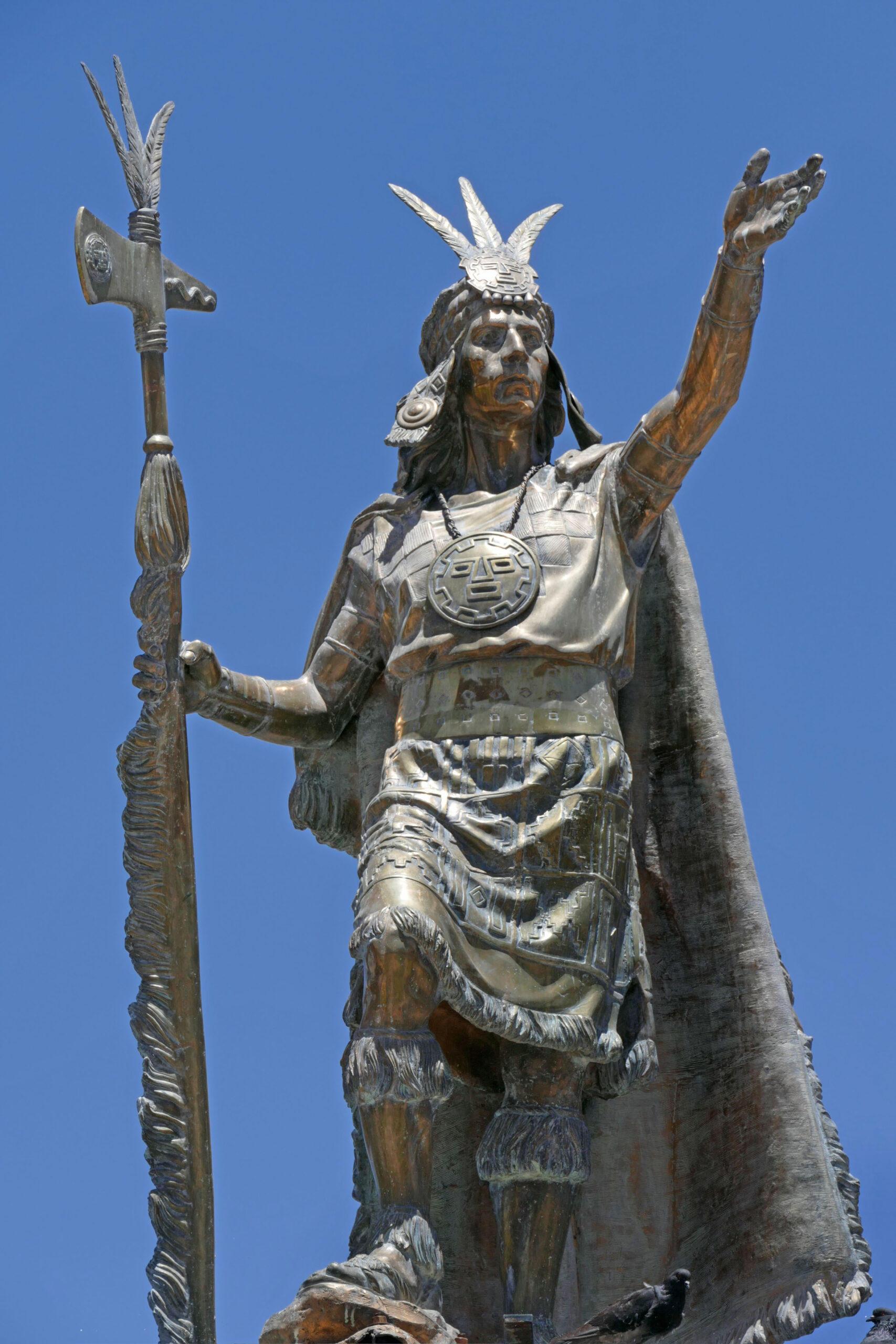
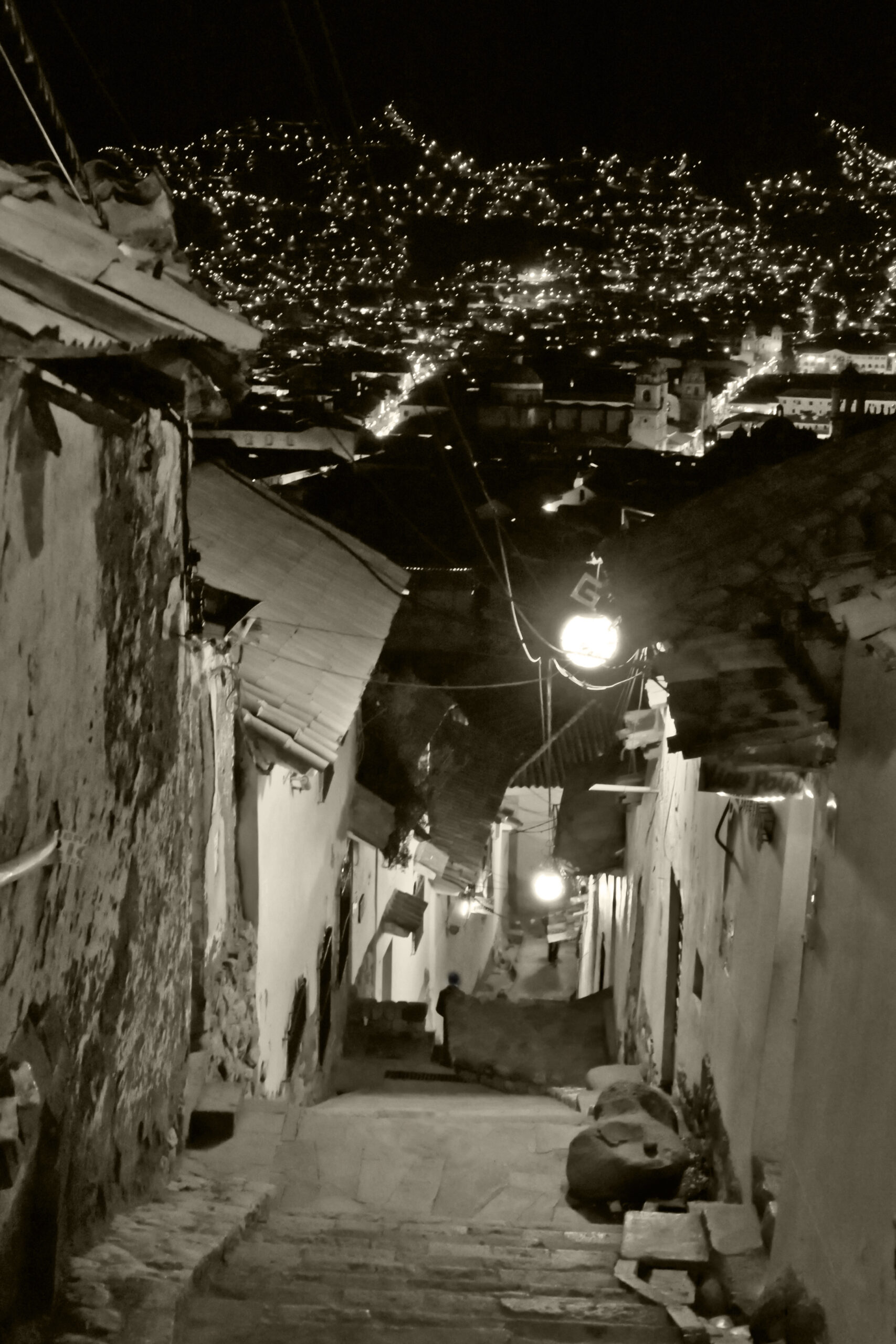
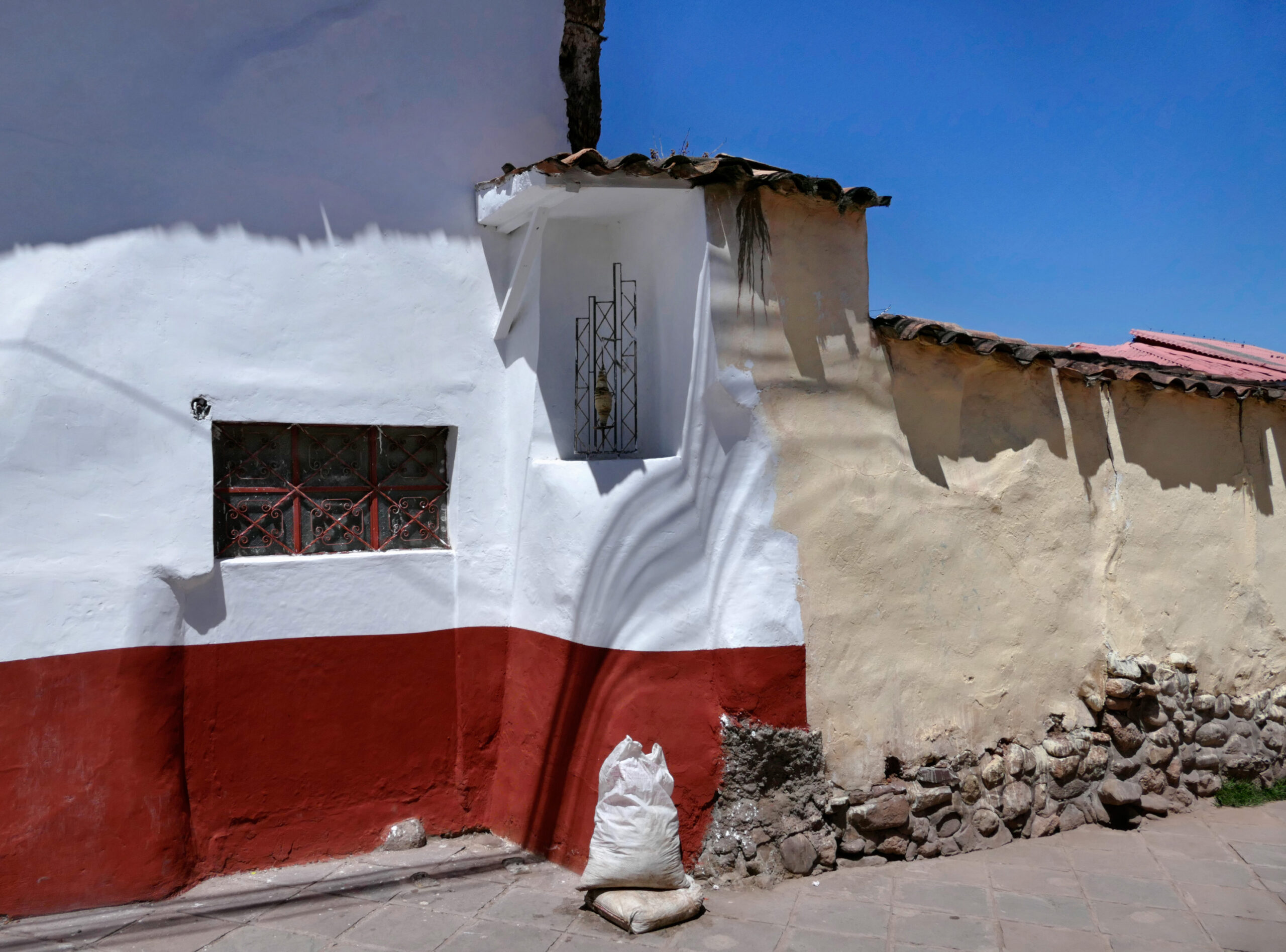

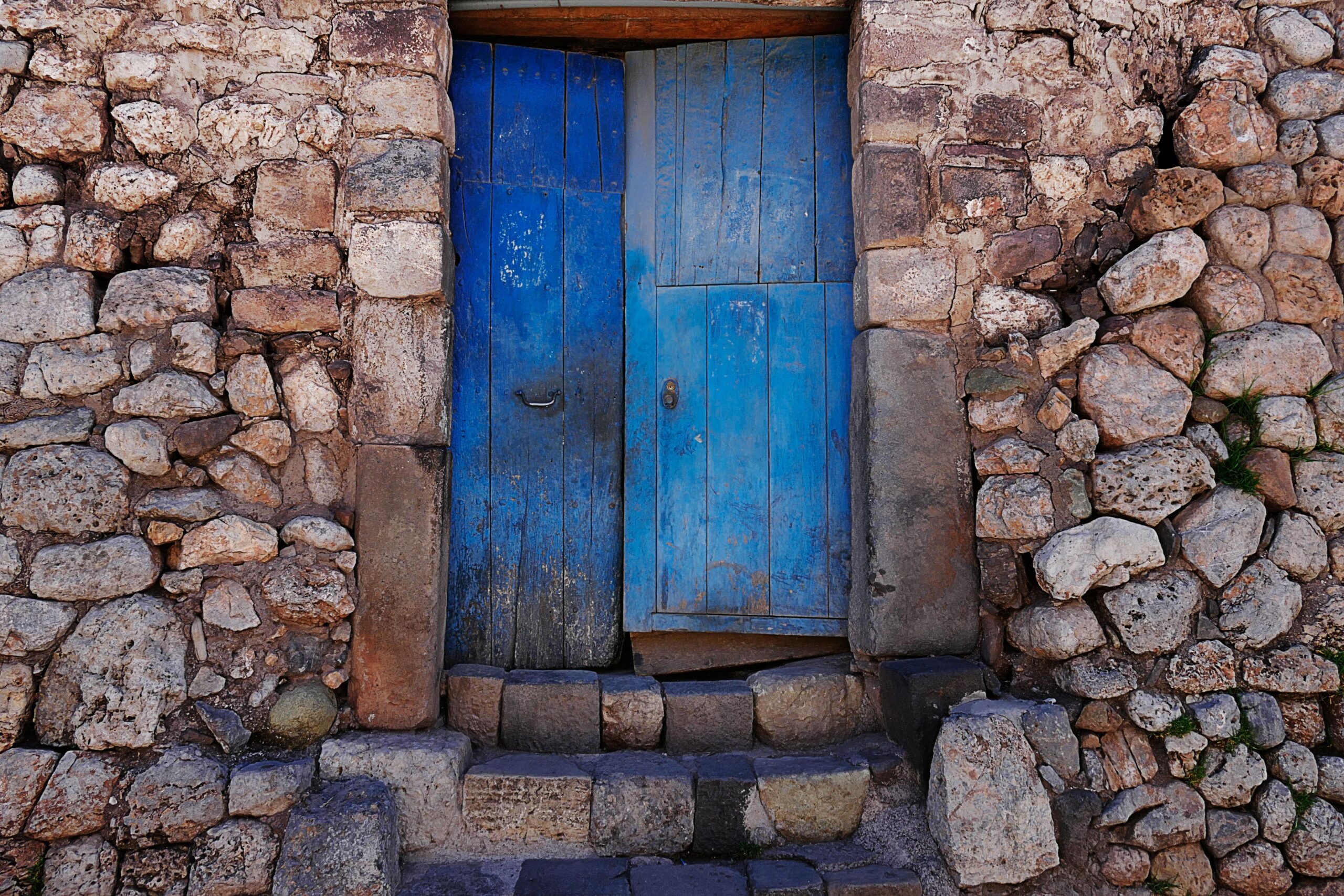
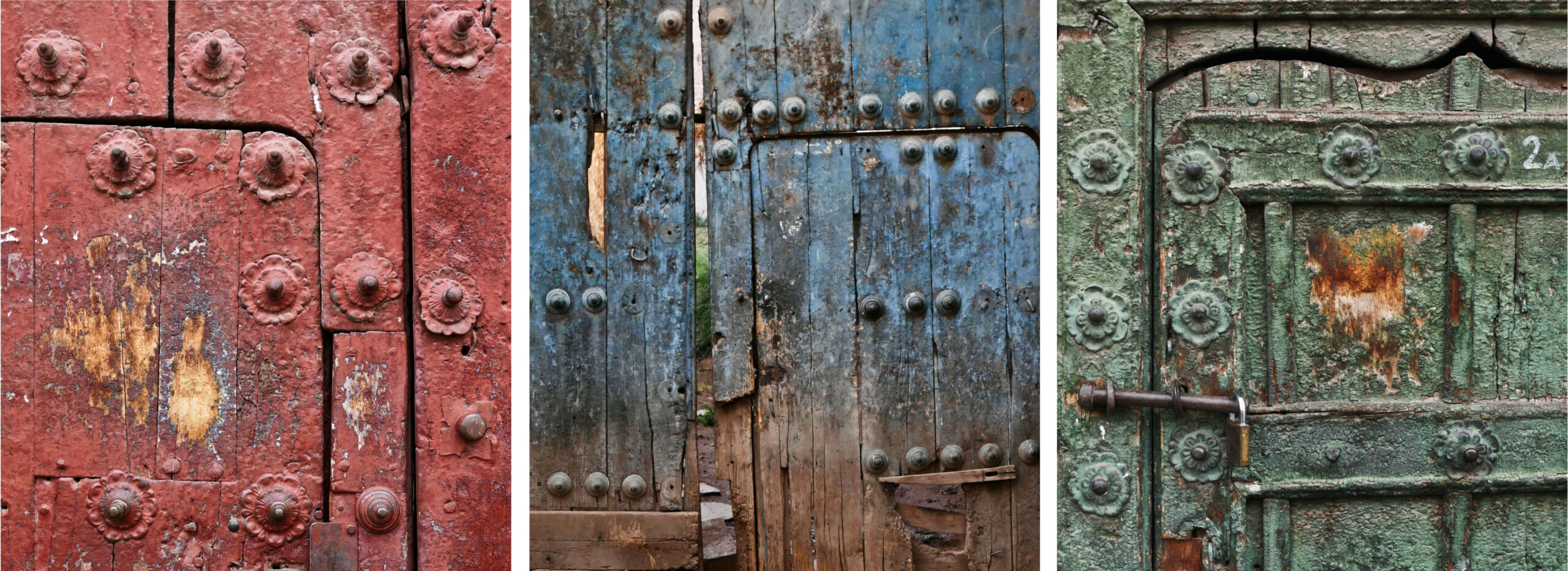
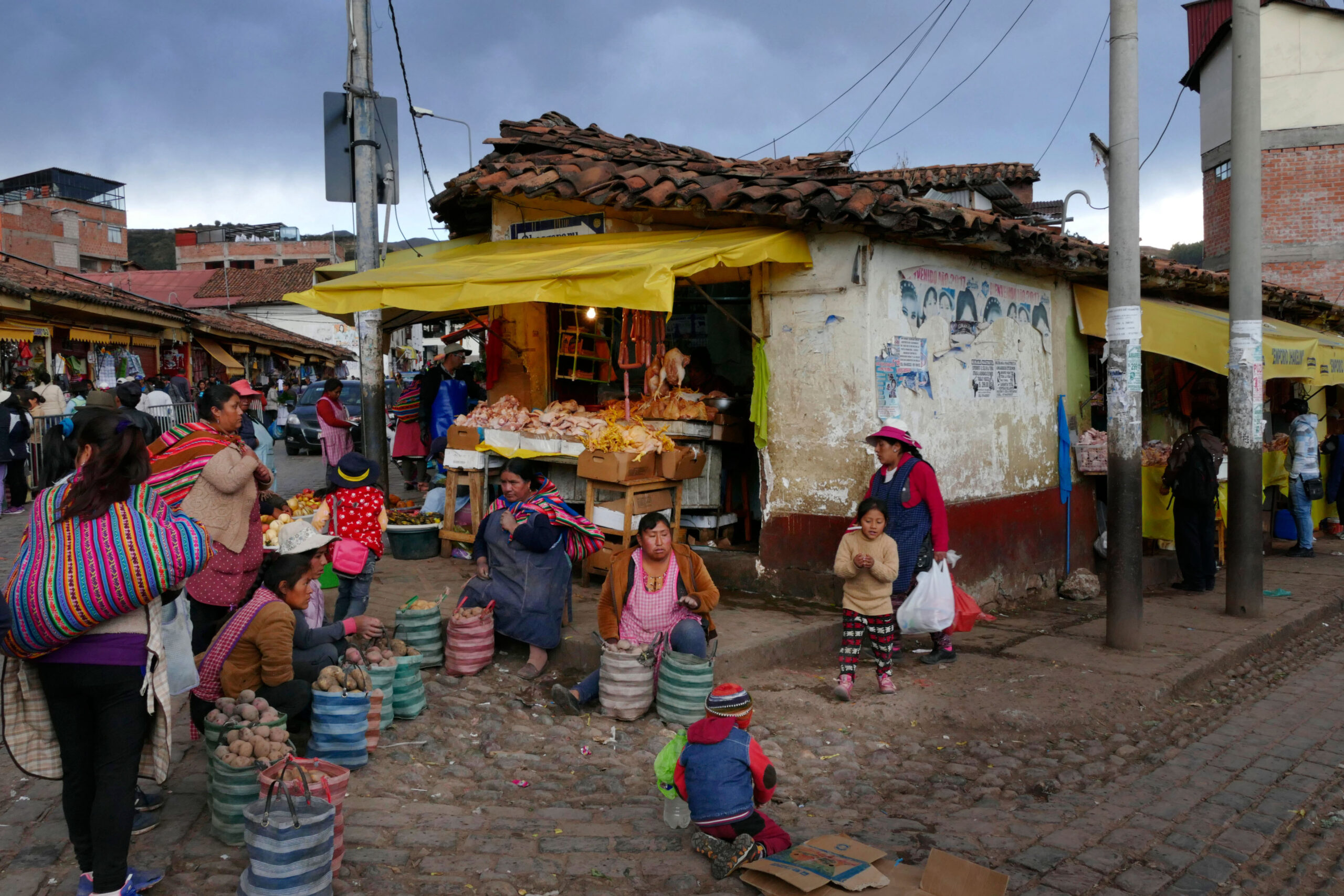
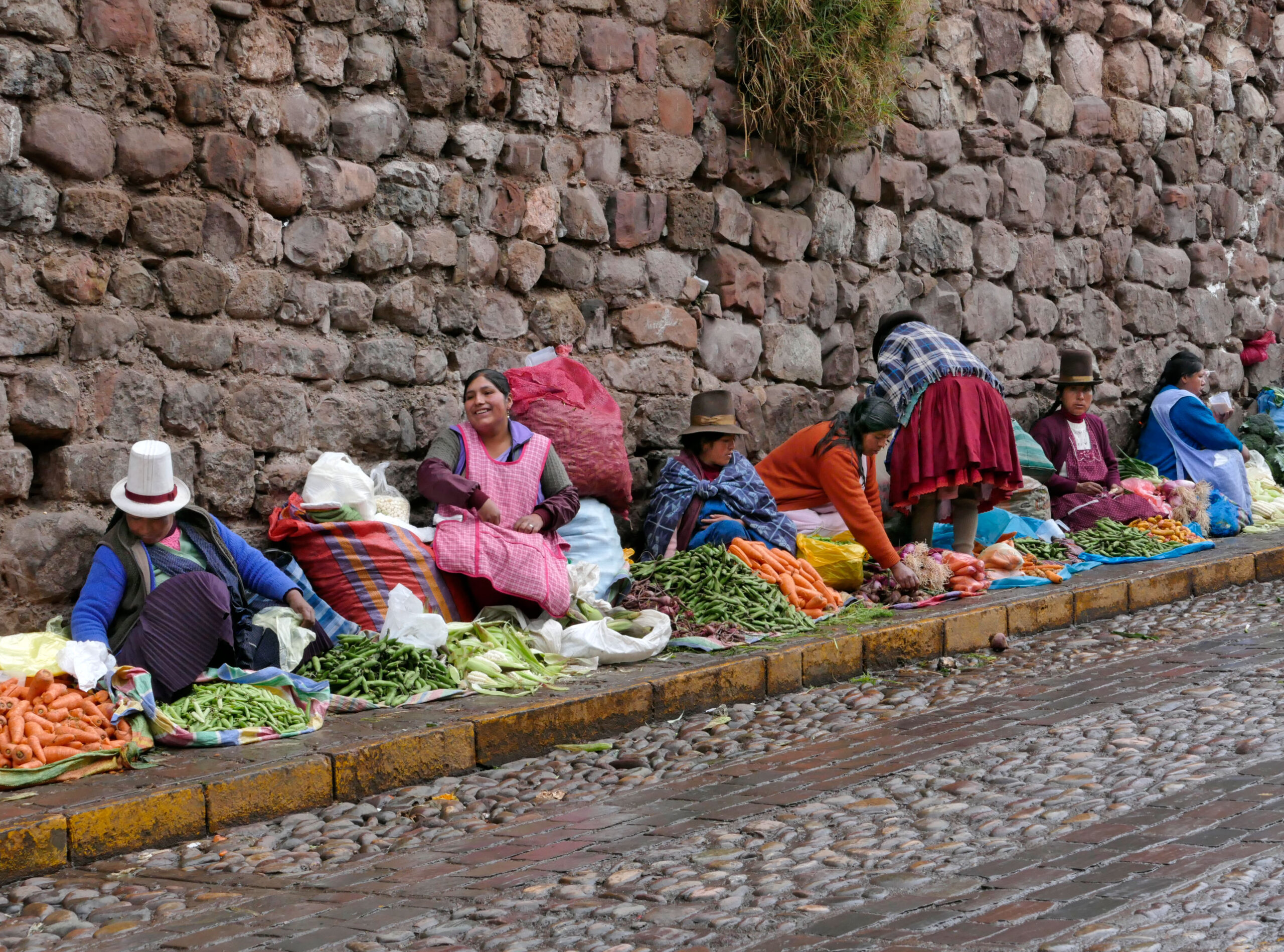
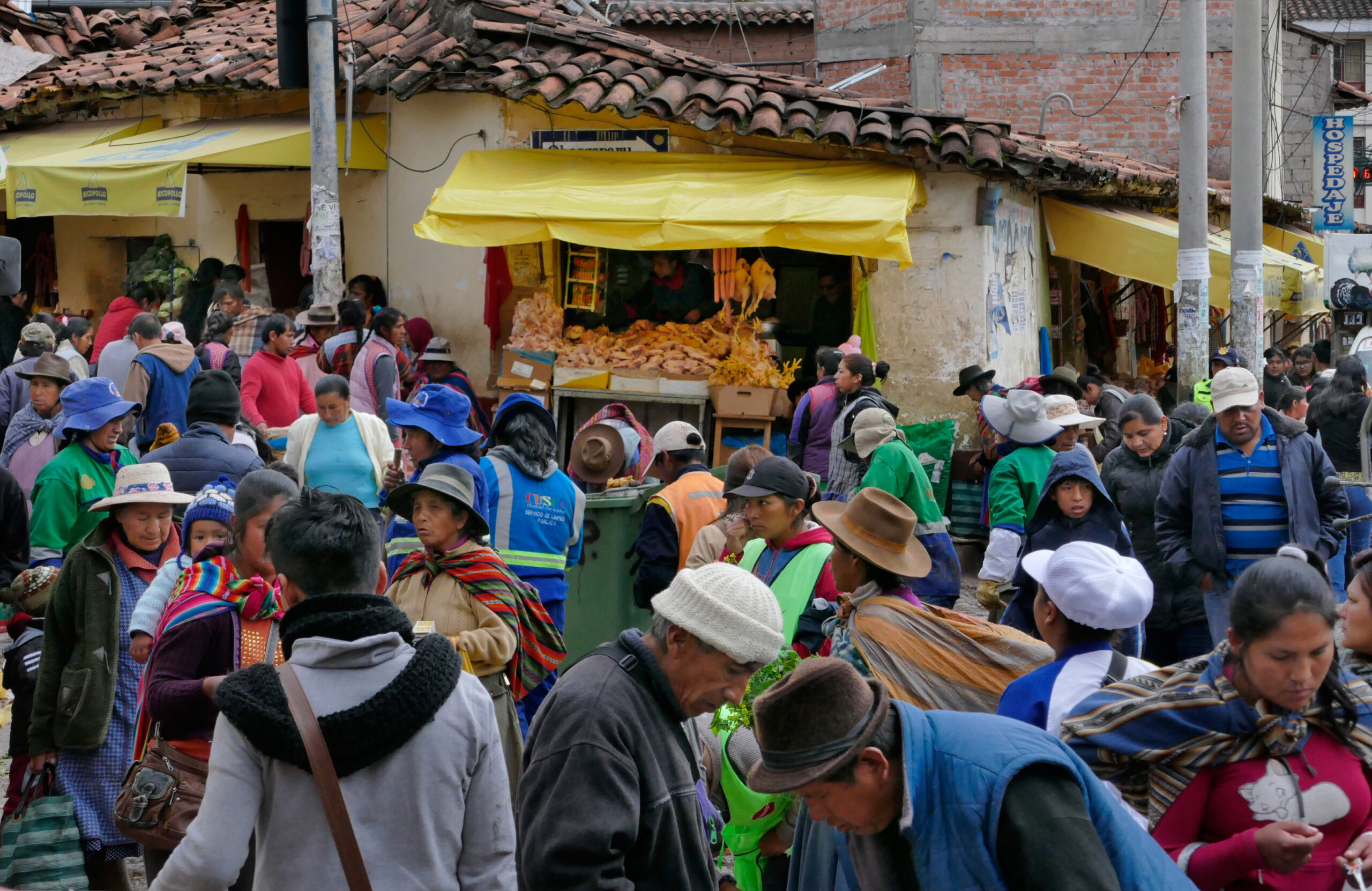
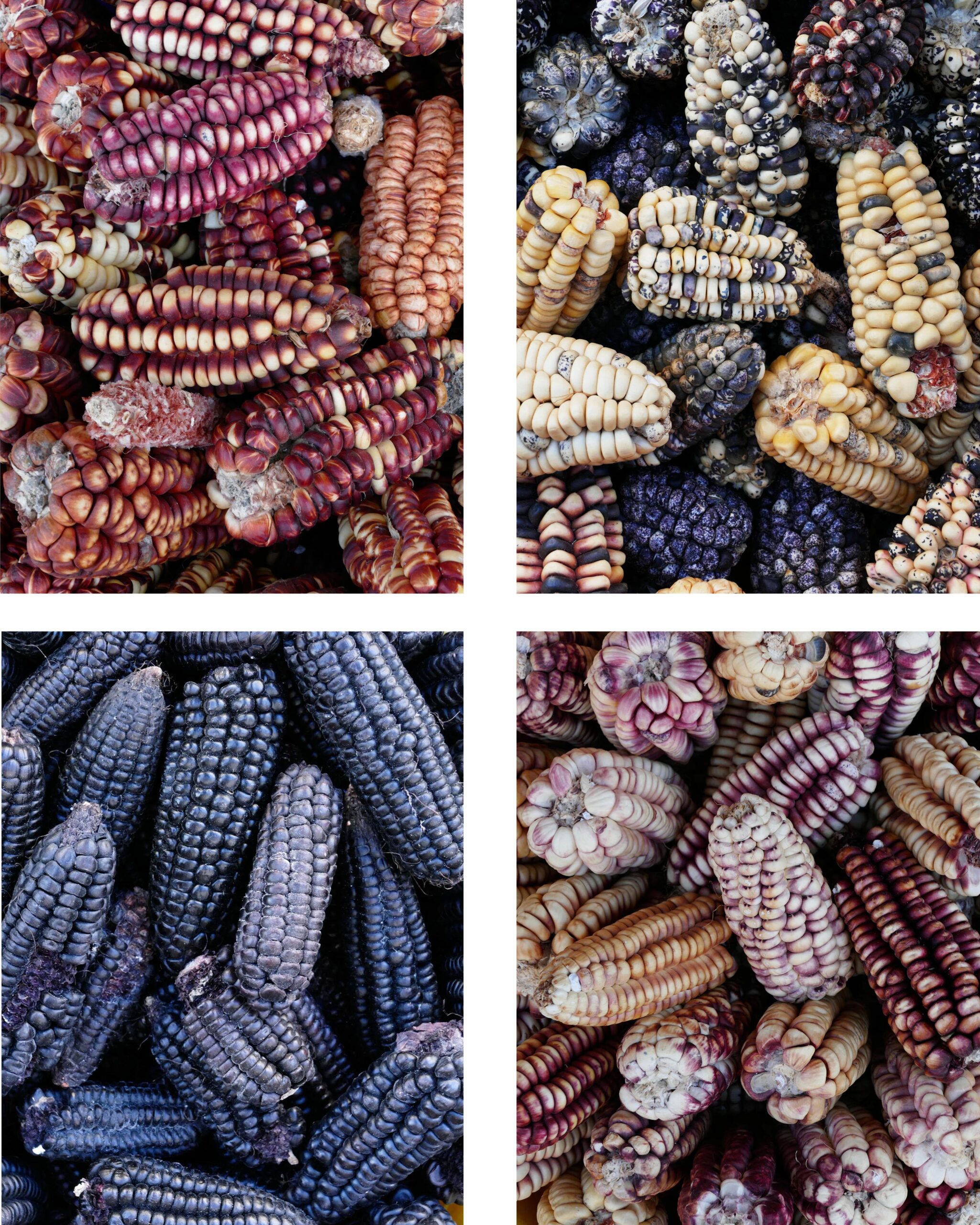

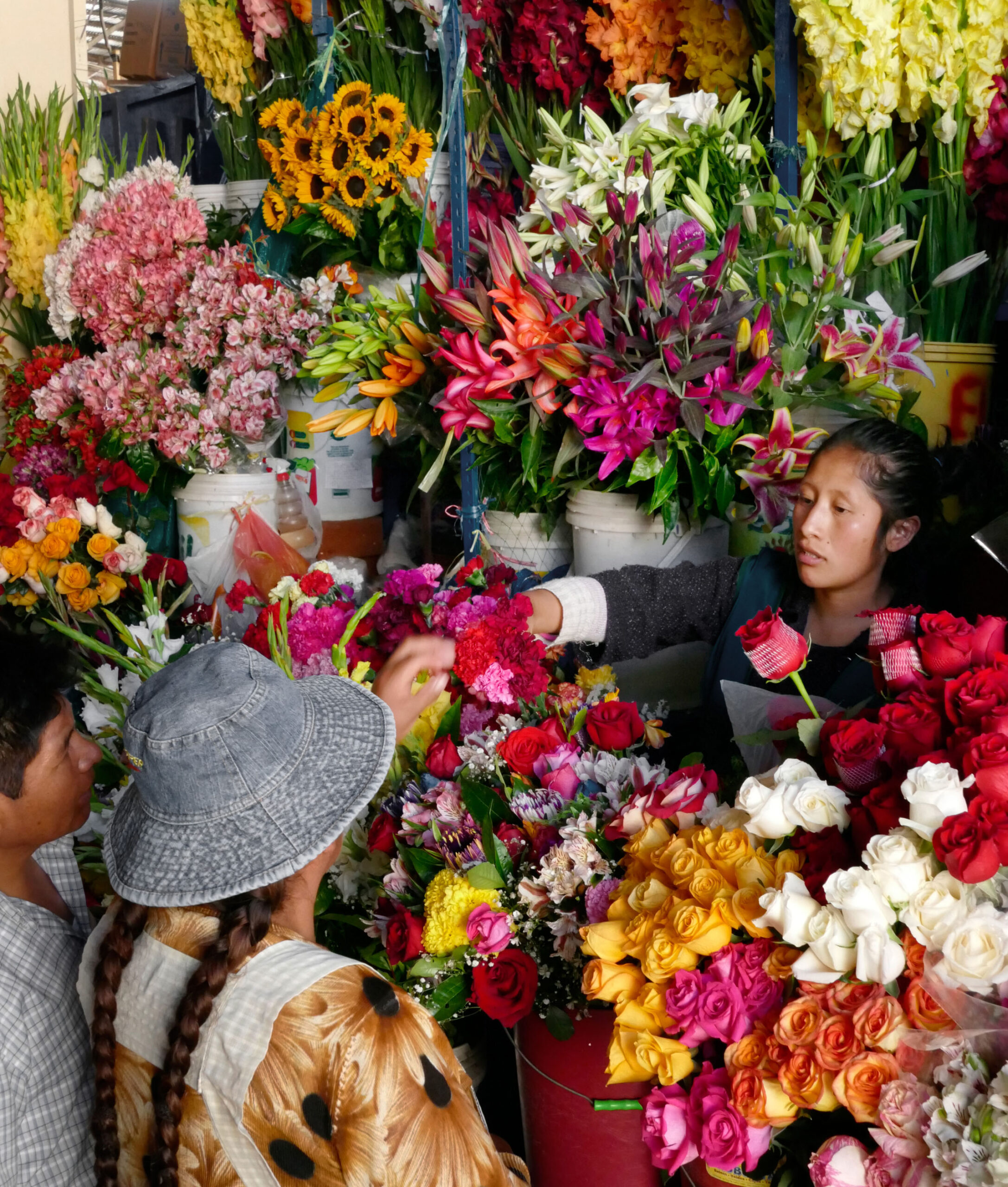


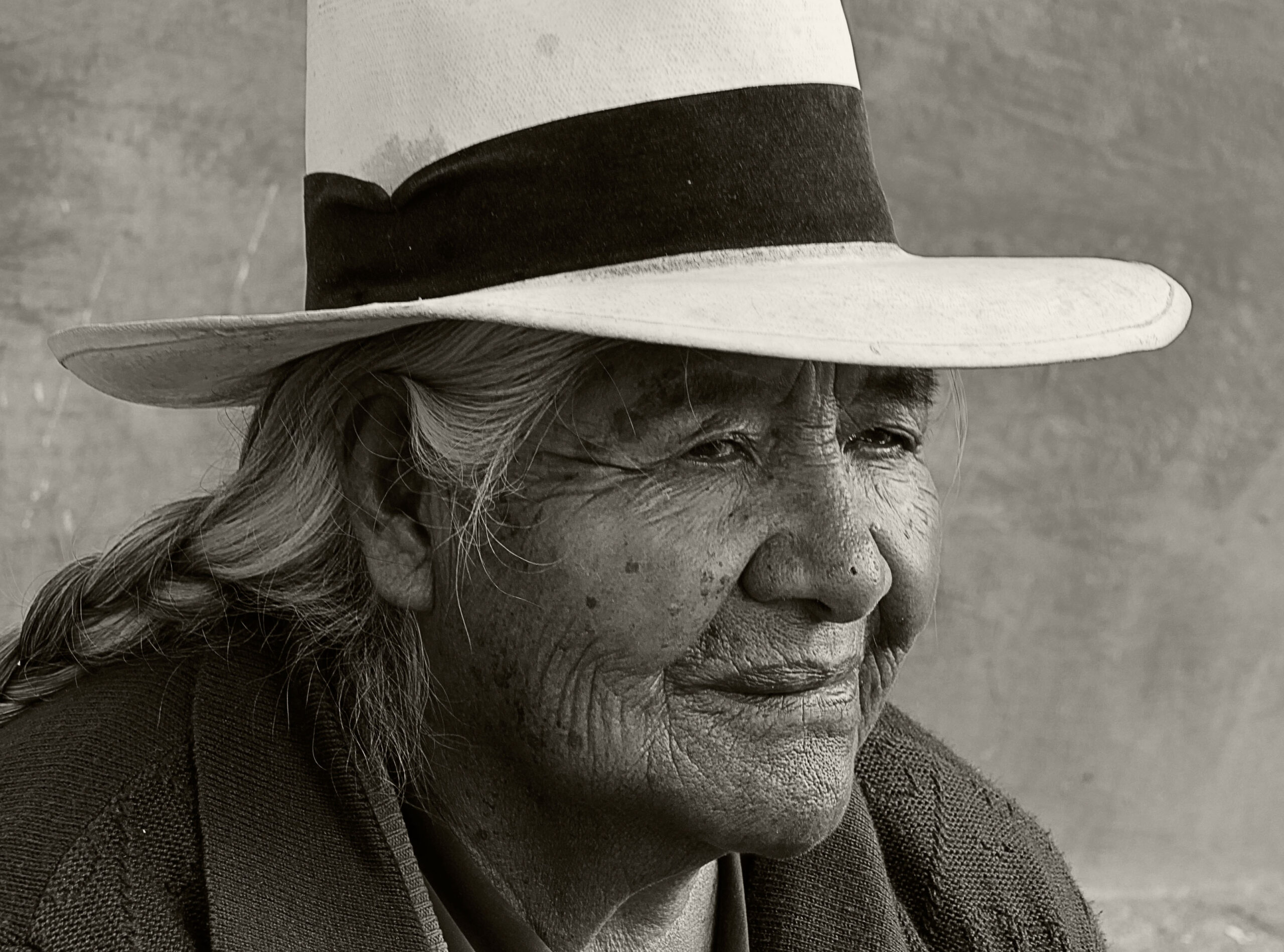
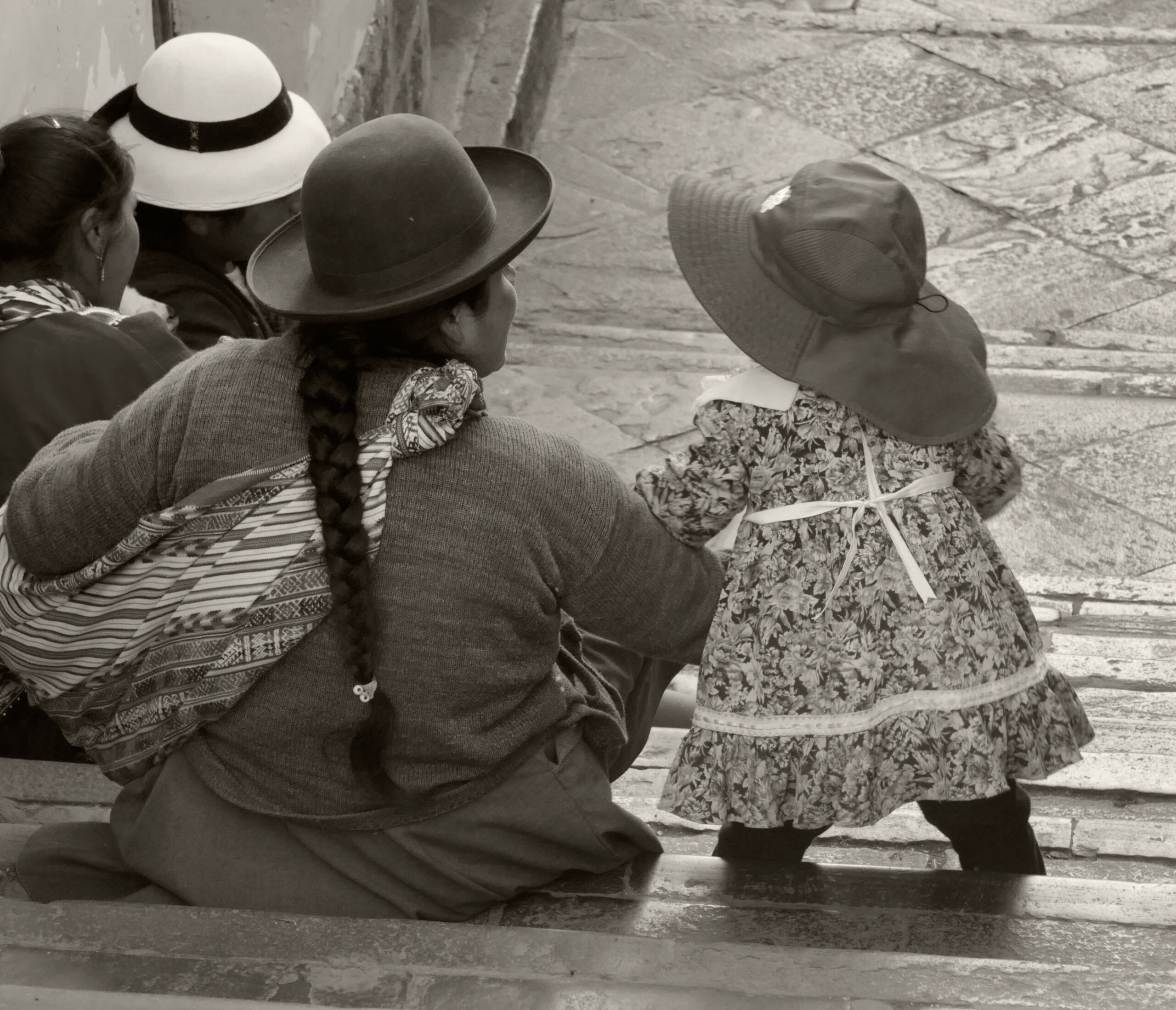
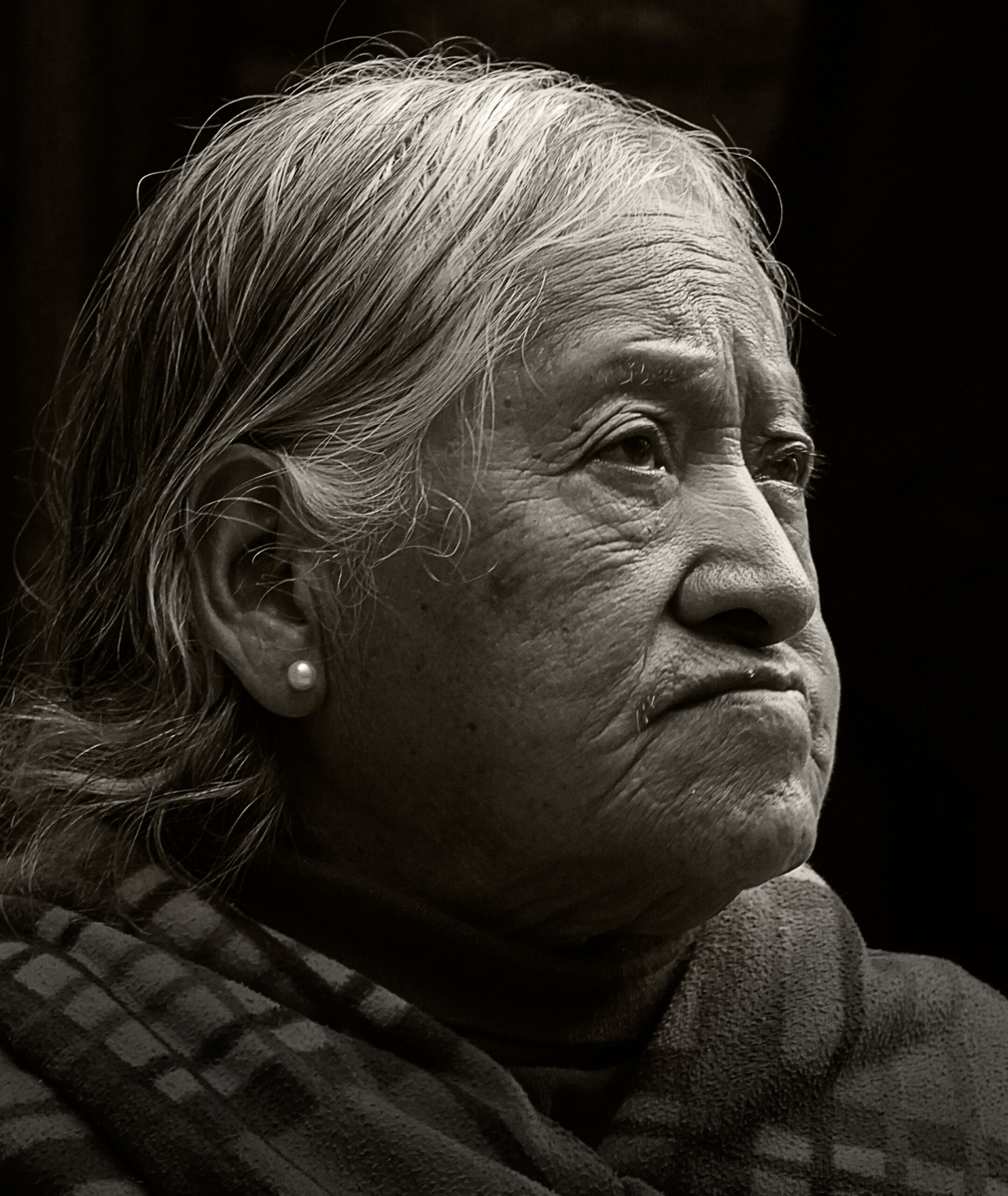
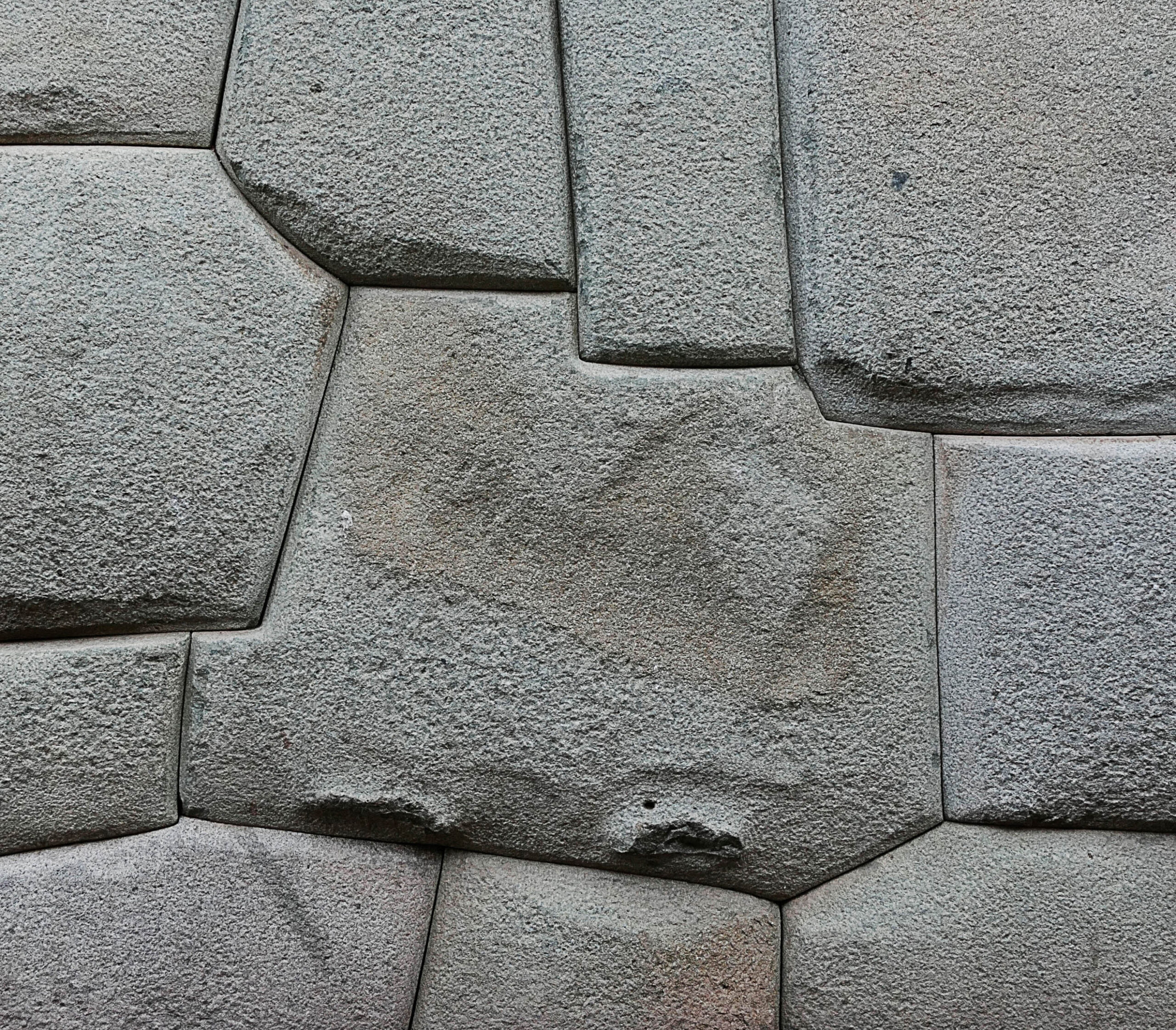
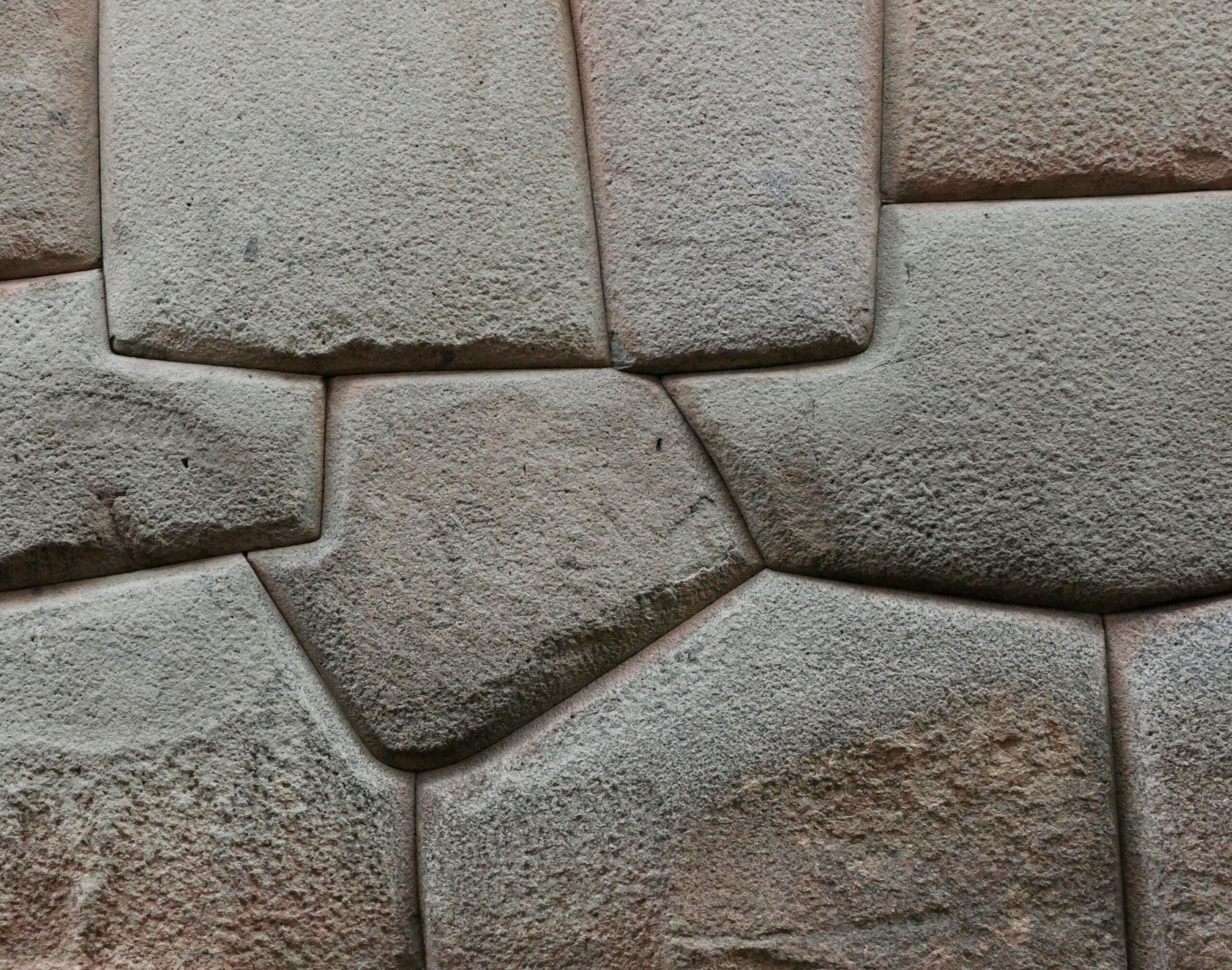
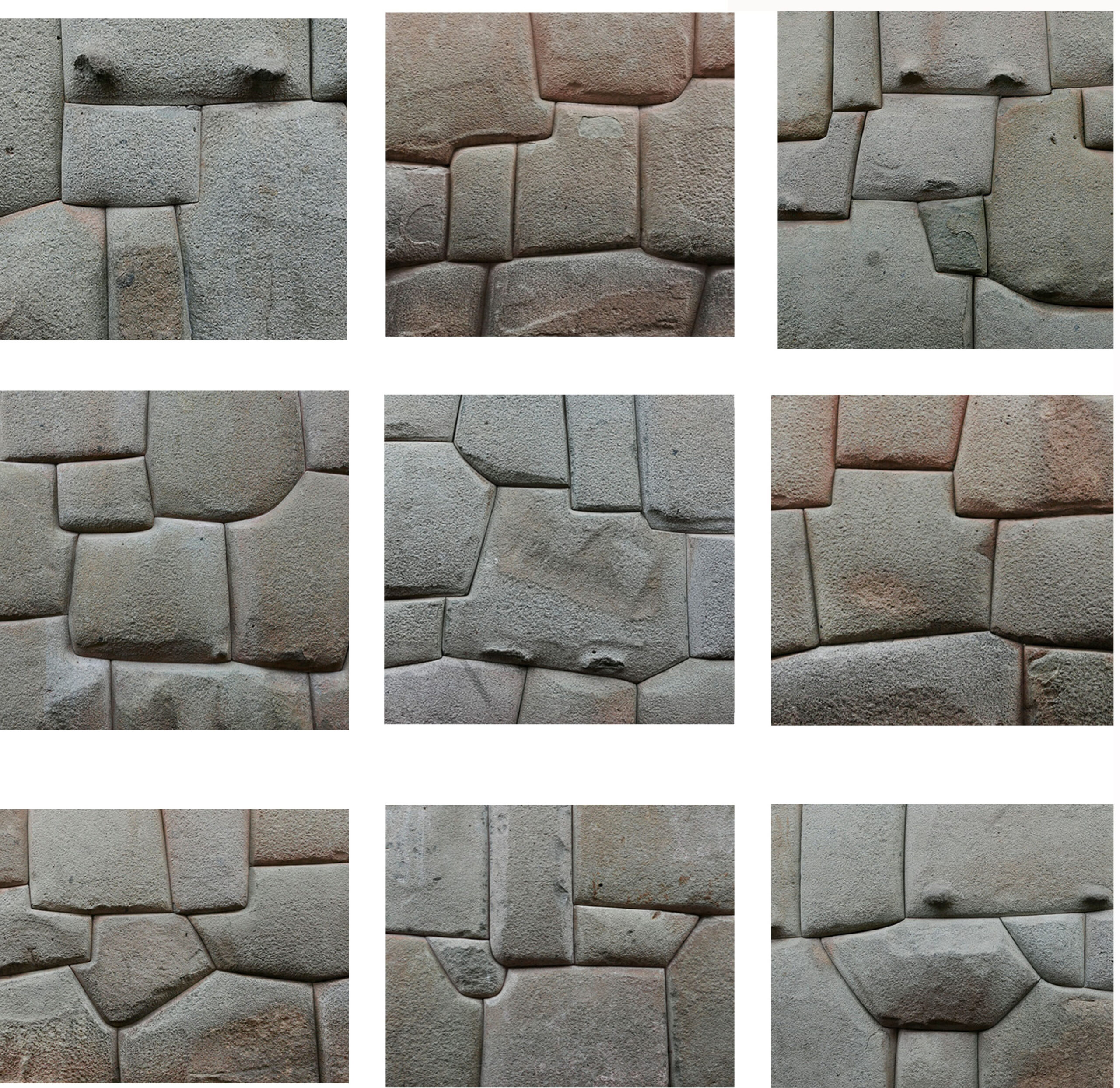

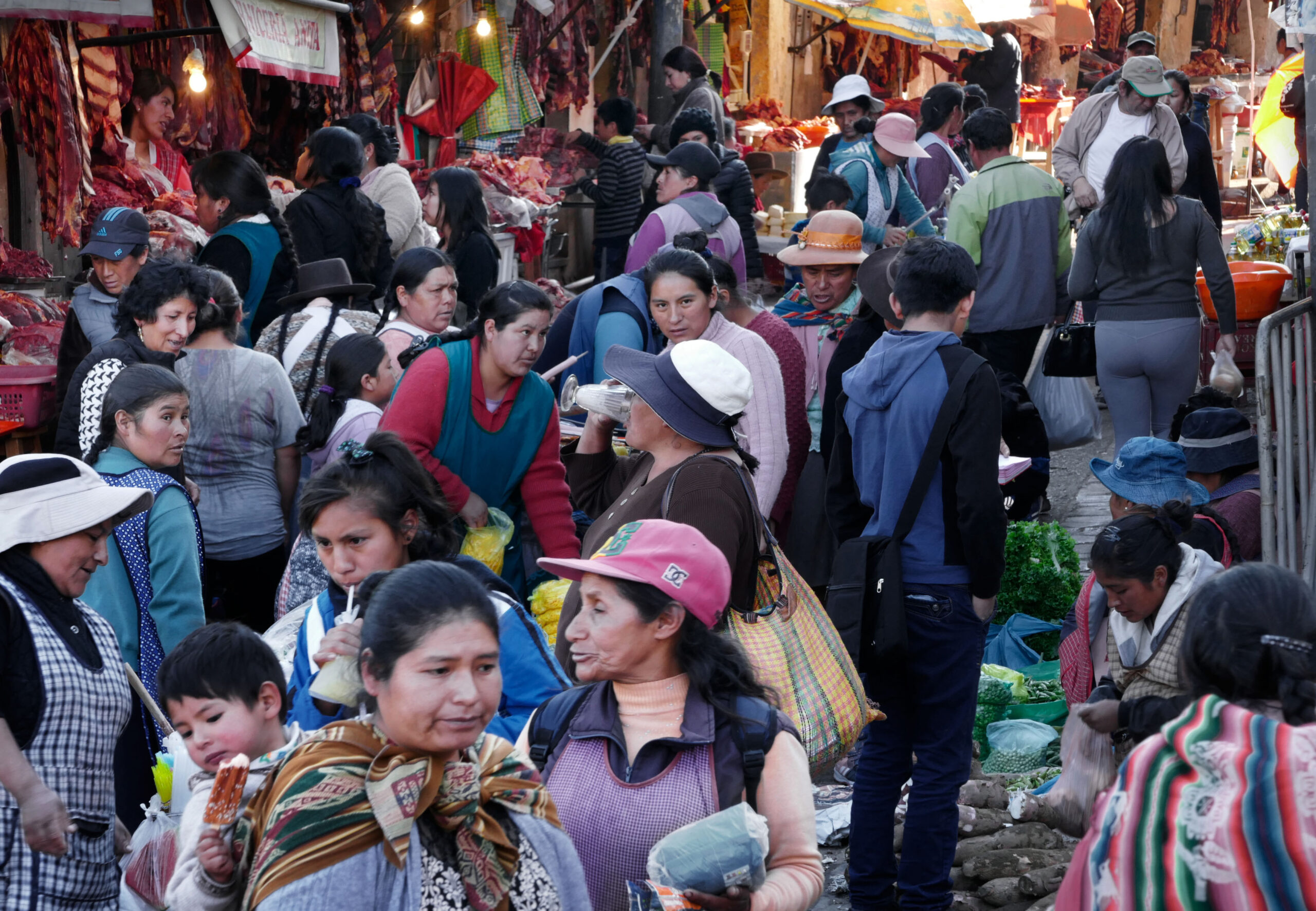


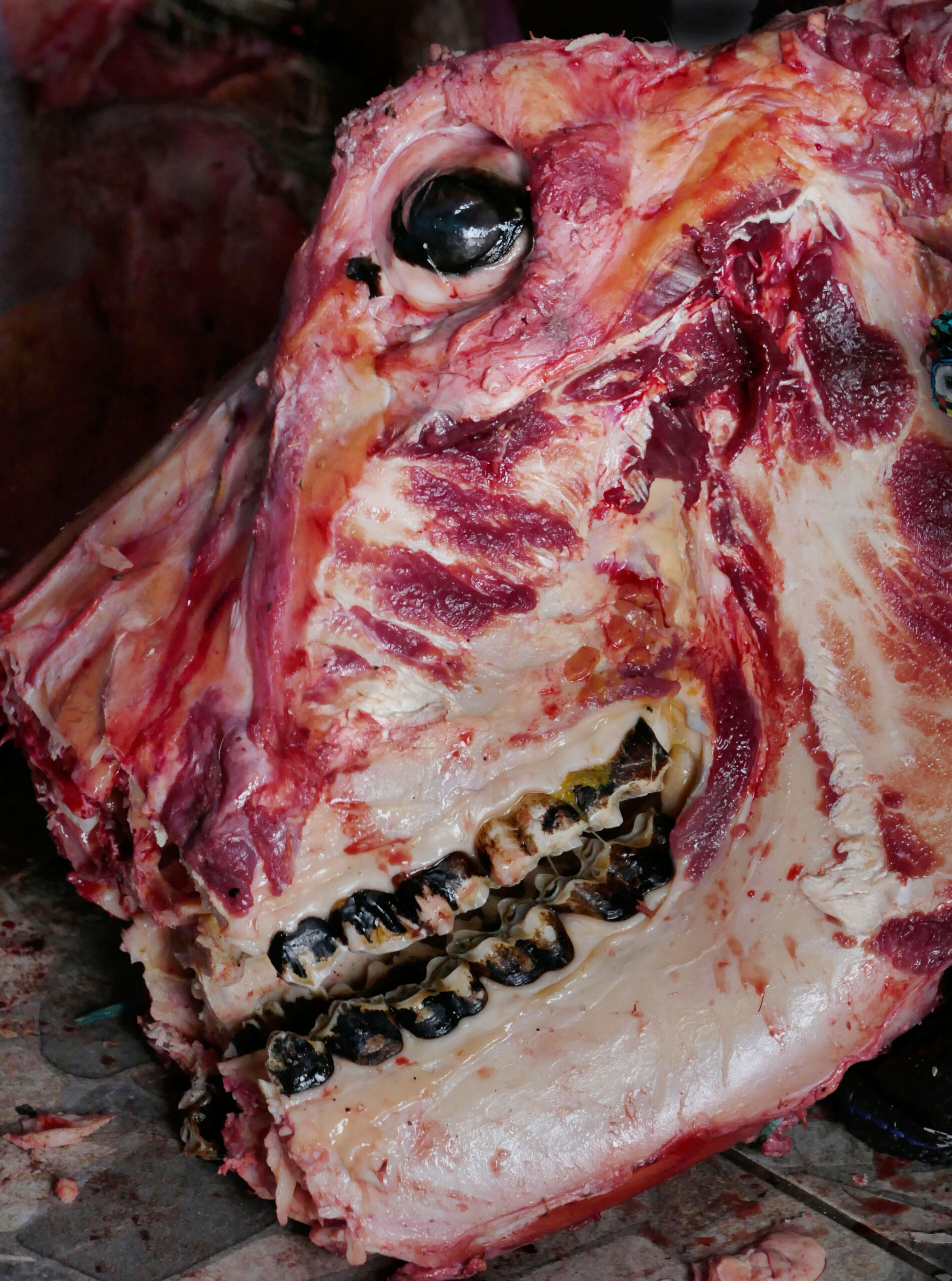
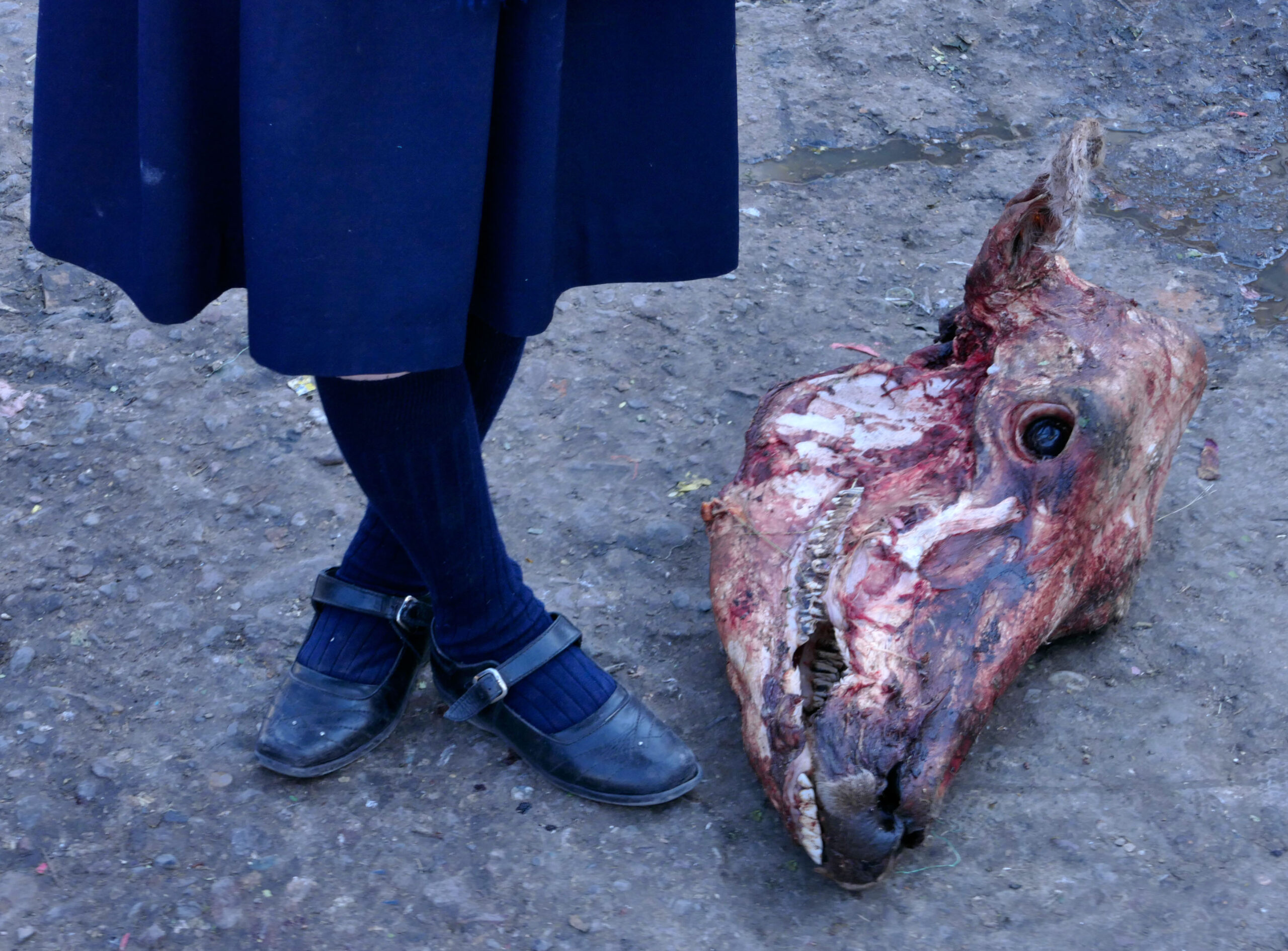
Historien bag billedet :
Slagterkvarteret i Cuzco, Peru, lå på et skrånende terræn, med smalle gader som udmundede i en stor plads, belagt med grove brosten og drænet af bredt riflede rister, hvor uforsigtige fødder let kunne falde igennem og brække. Resterne fra slagterkvarteret rullede gennem de smalle gader ud på pladsen, hvor de fortsatte mod det laveste og fjernest liggende hjørne. Her mødtes alt, også fra kvarterer med frugt og grønt. Affaldet af blod, kød, indvolde og knogler, kål- og tyrehoveder blandedes med herreløse hunde i kamp om føden, og hjemve´ramte og trætte mennesker, der ventede på bussen. Al passager- last- og affaldstransport mødtes og skiltes på denne plads.
En pige i skoleuniform stod og ventede på bussen. Hun havde låst benene i en balletdansers stilling, og var i sin egen verden. Alle blev taget af situationen, da en bump lyd lød fra slagterkvarteret. Et afskåret og lænset tyrehovede hoppede henimod de afventende. Hovedet tabte fart og lagde sig for foden af pigen. Jeg var allerede i fuld gang med de visuelle indtryk fra pladsen, og vendte hurtigt kameraet mod optrinnet og indfangede det, inden pigen fik viklet sig ud af benstilling og “den indre verden”, og reagerede på den ydre verdens makabre optrin.
( Cuzco, Peru, 2017 )

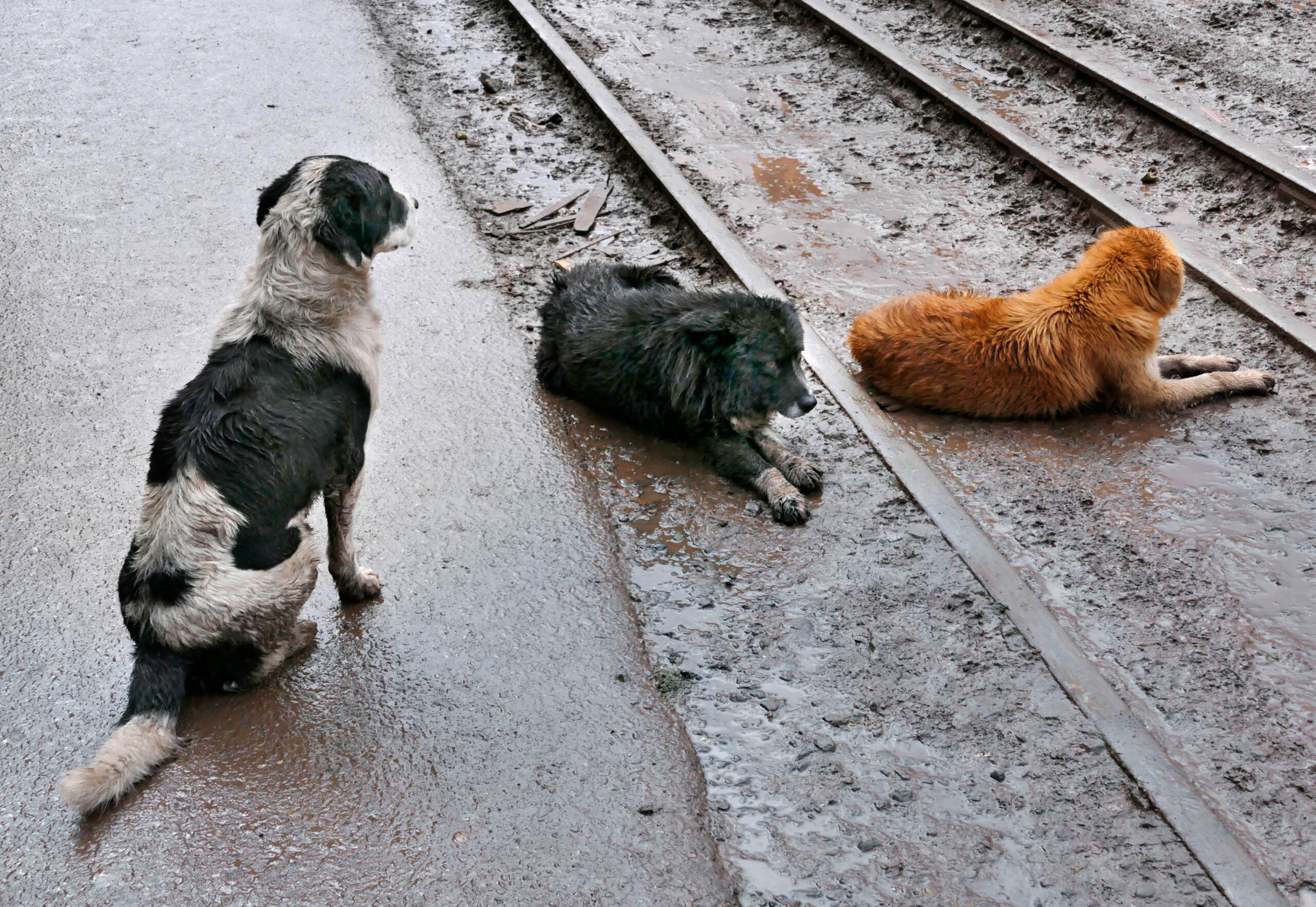
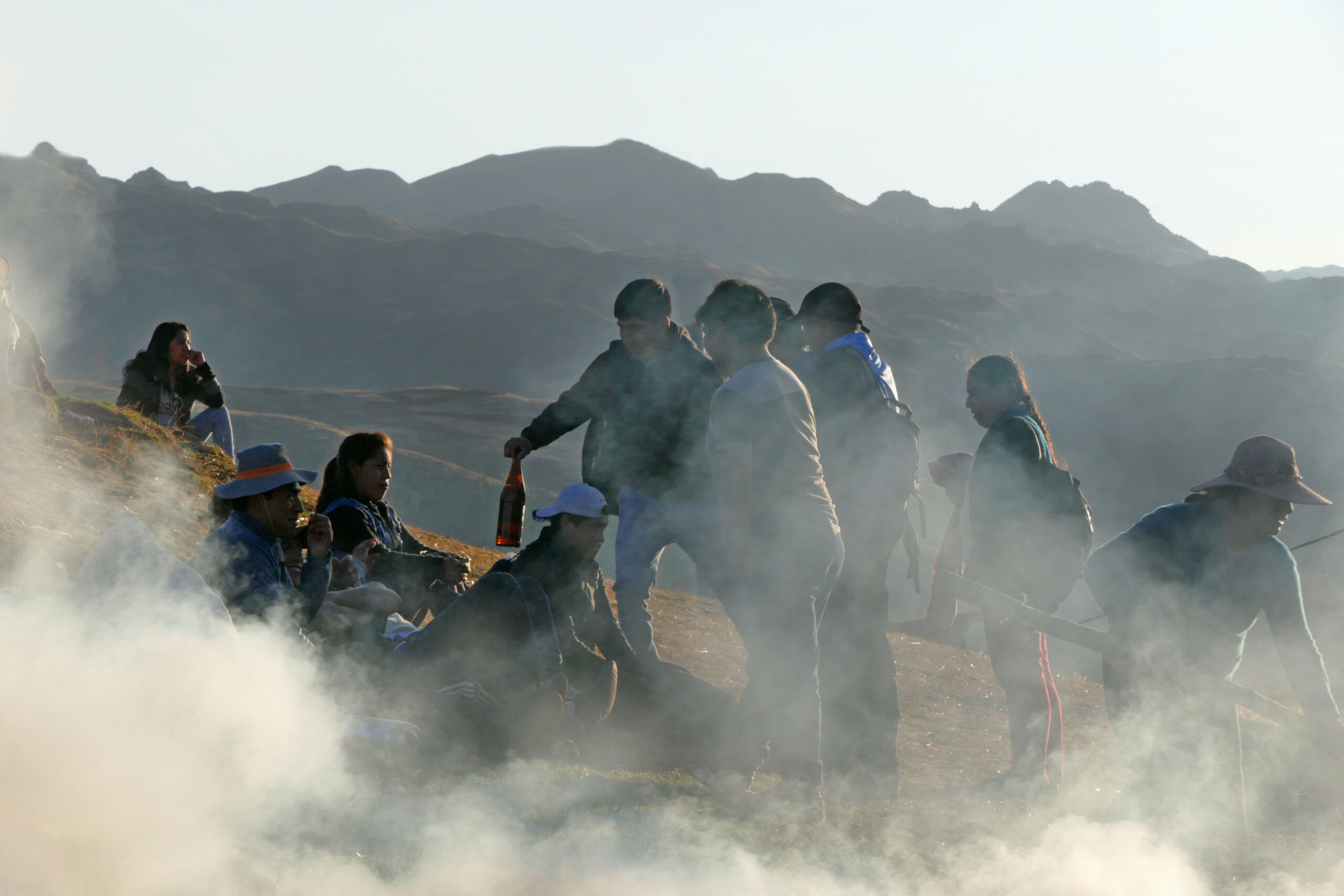

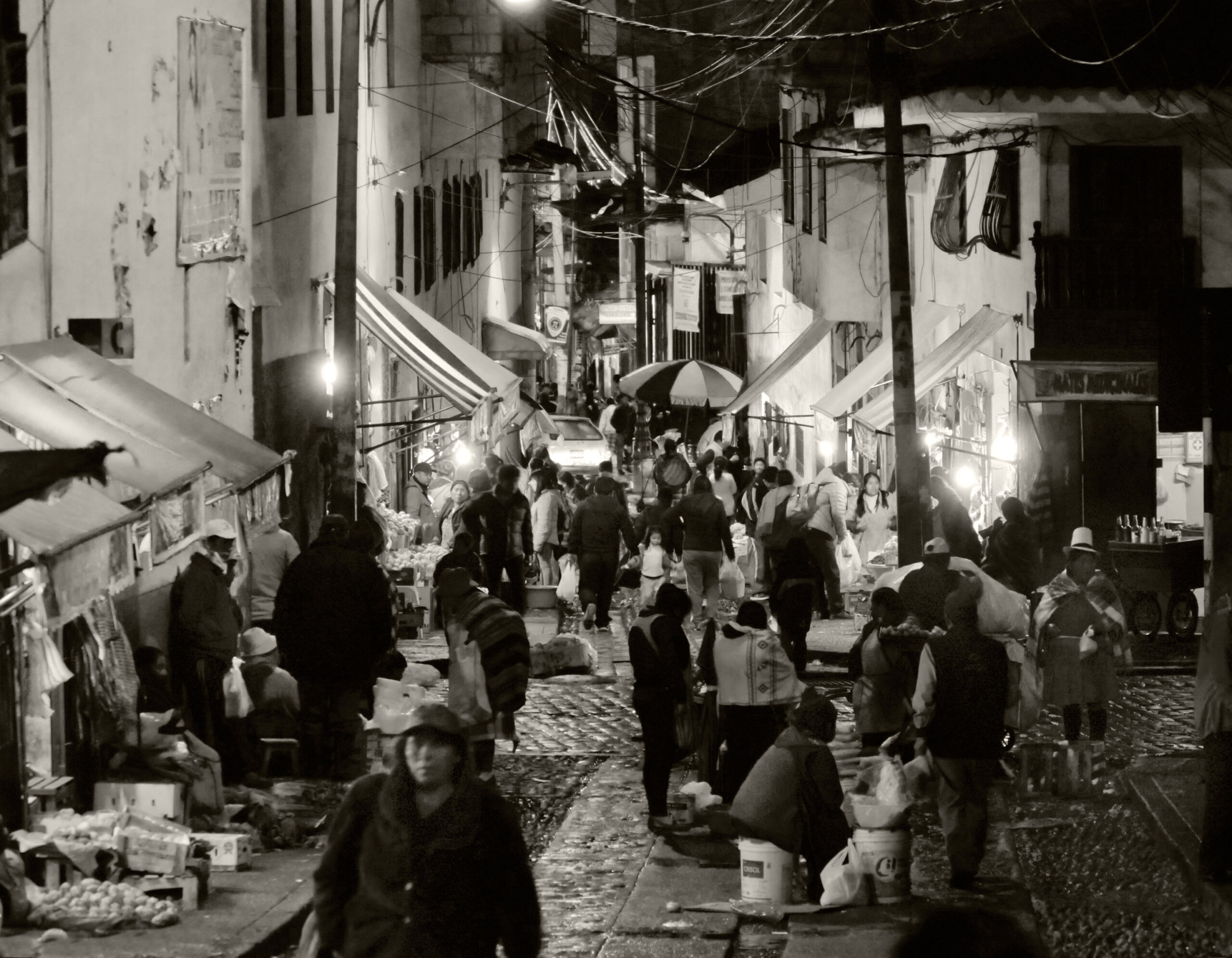
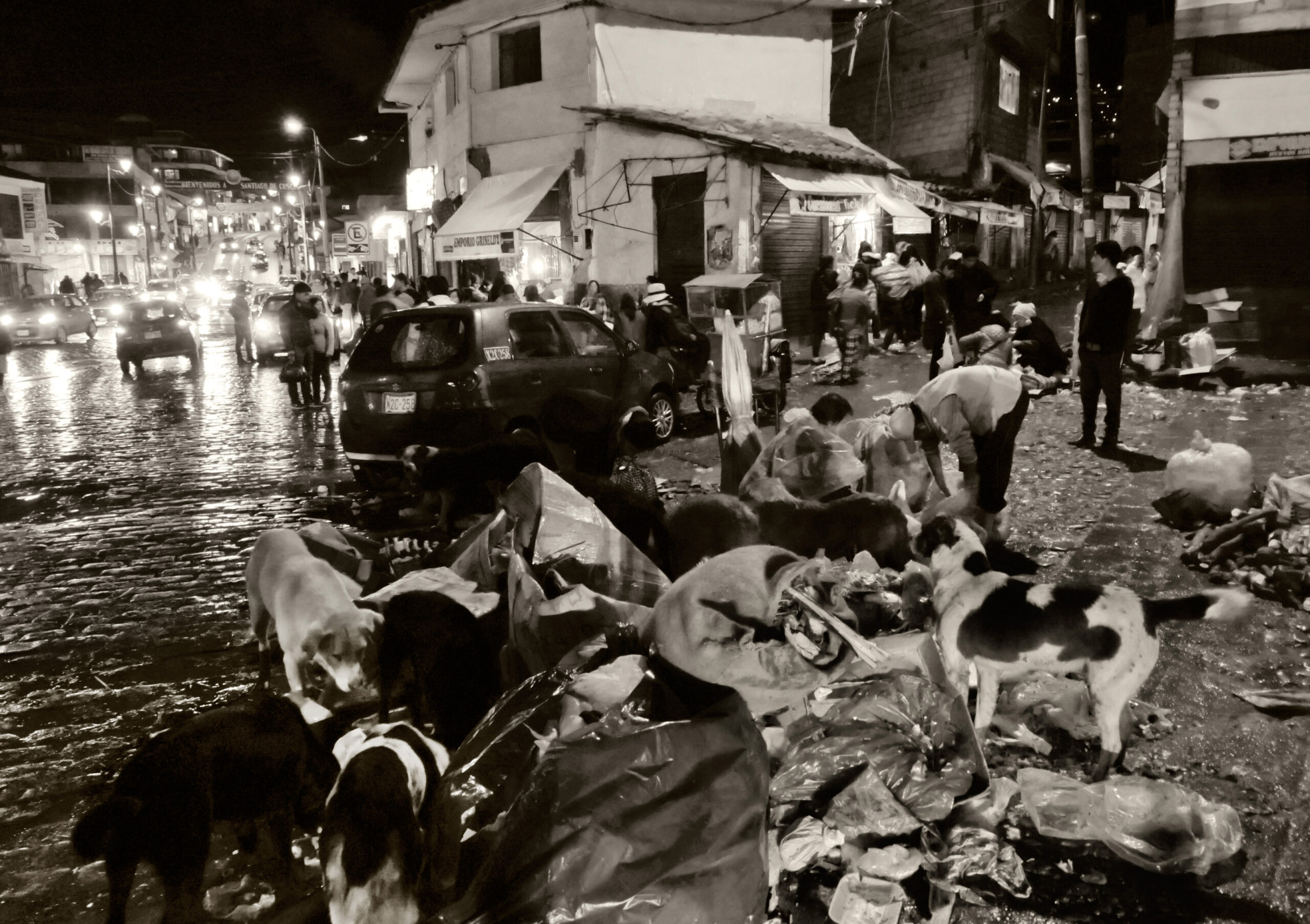
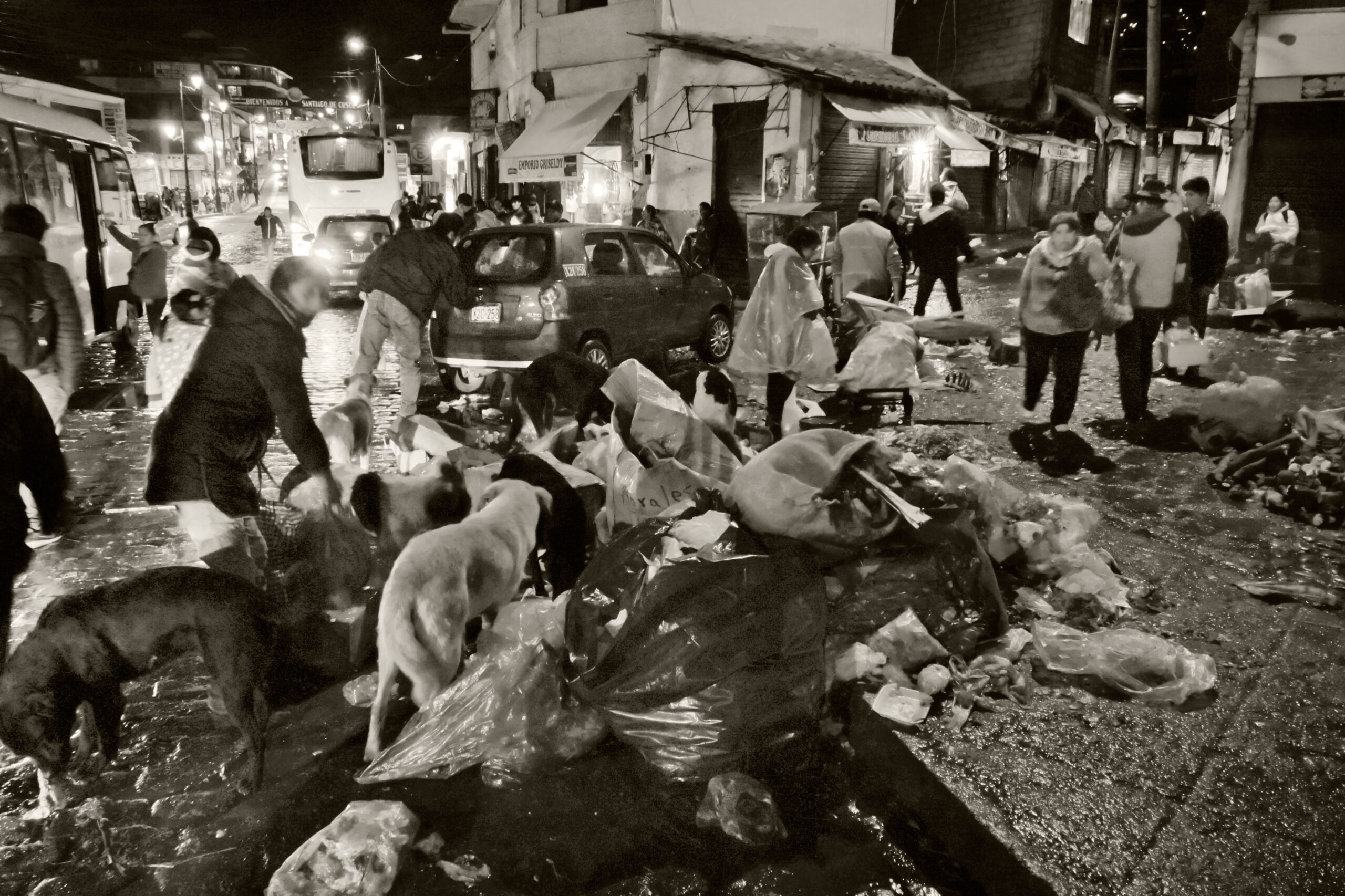
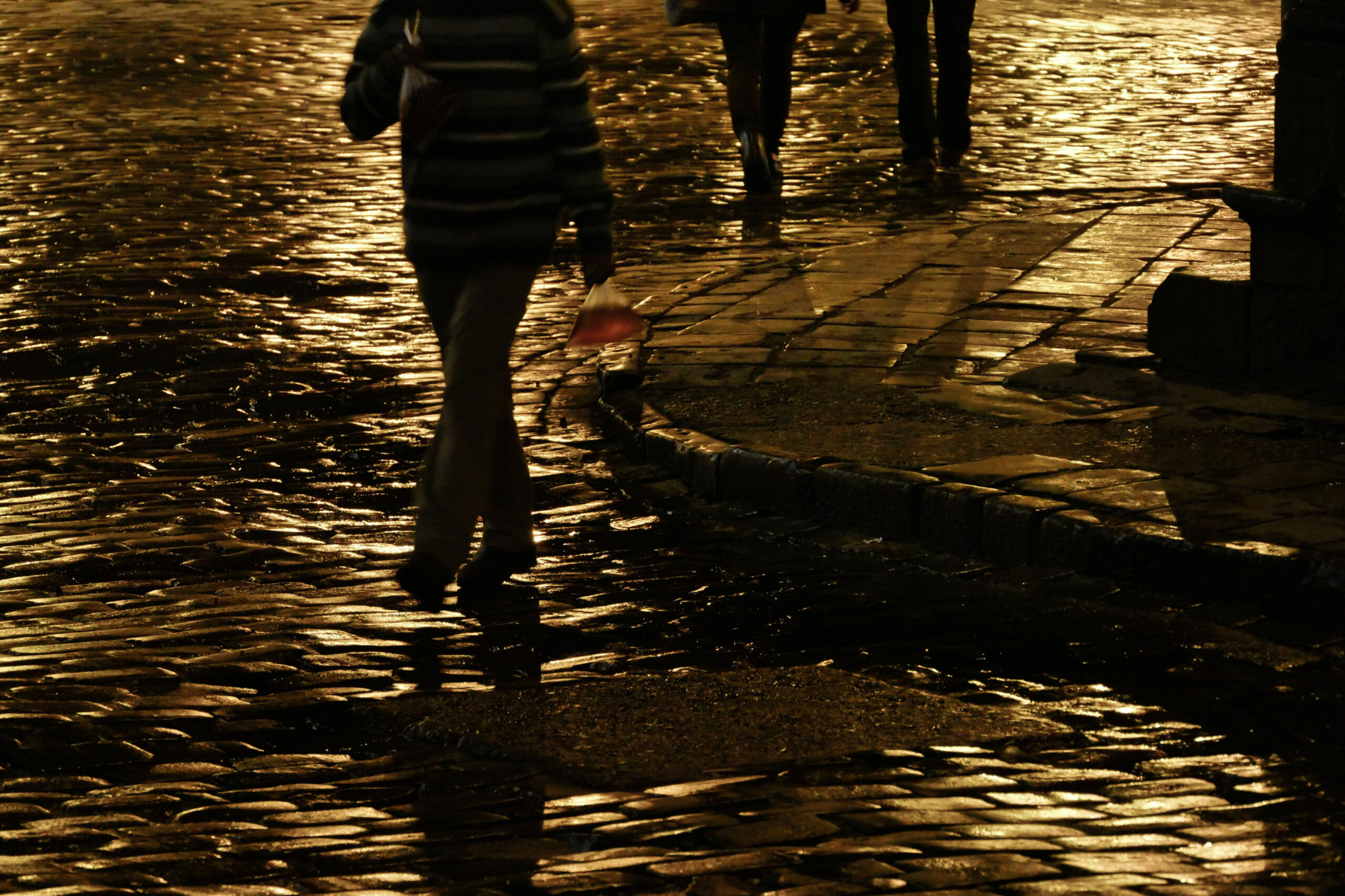
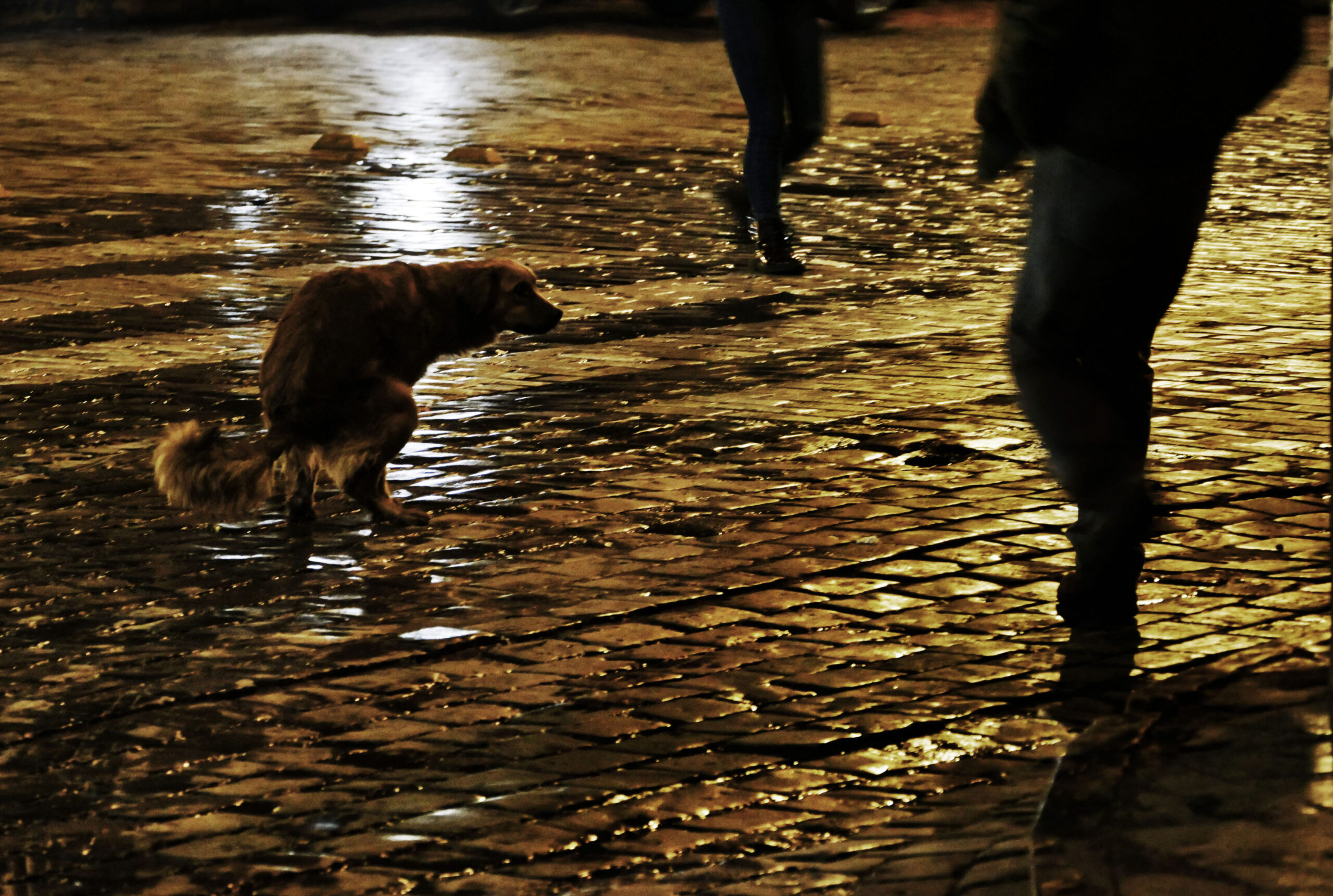
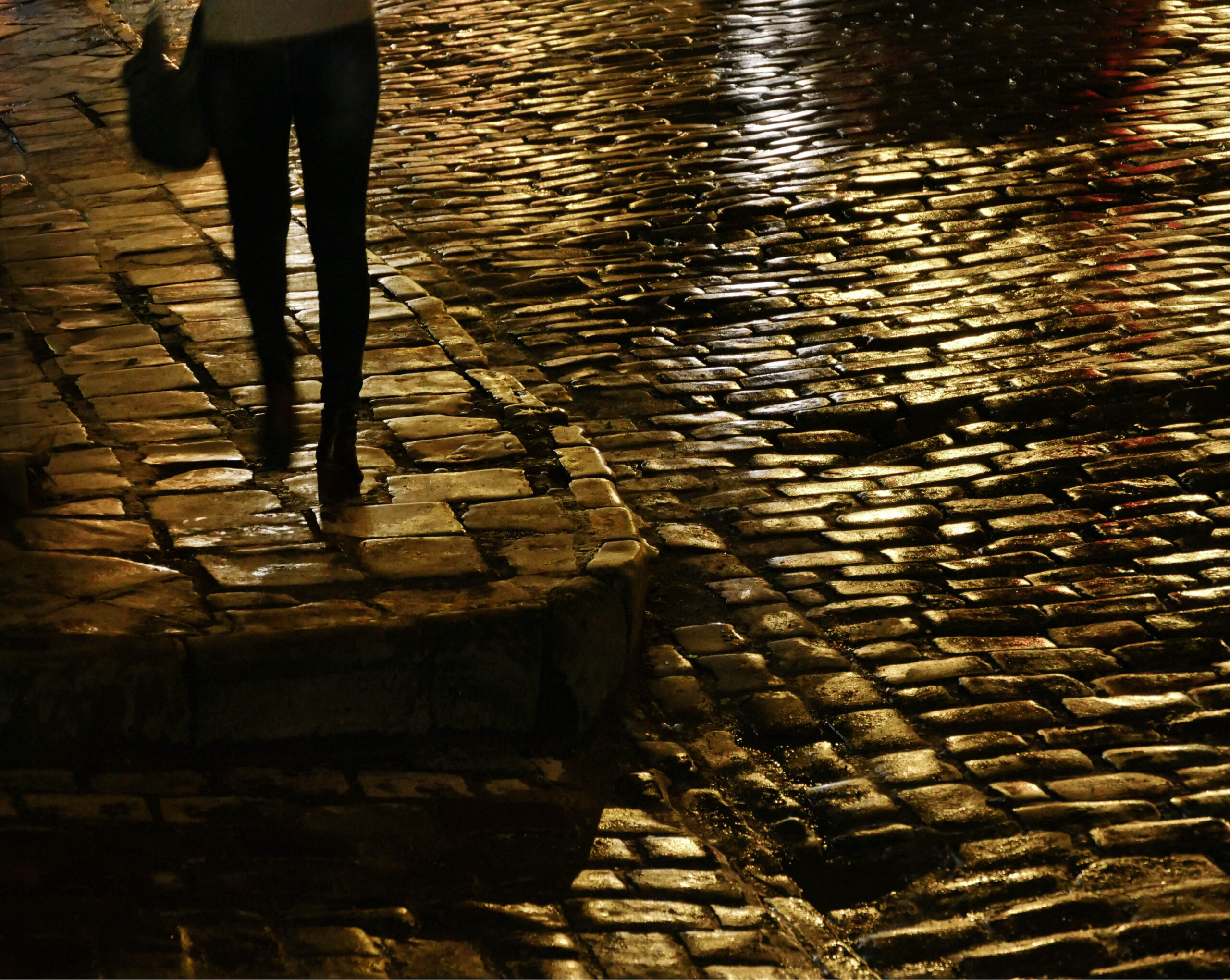
PERU (I) Amazonas
https:/∆/www.nedersteetage.com/peru-i-amazonas/
PERU (II) Qusqu ~ Heartland
https:/∆/www.nedersteetage.com/peru-ii-qusqu/
PERU (III) Titikaka & Uru
https:/∆/www.nedersteetage.com/peru-iii-titikaka/
PERU (IV) Flettede tråde på tværs af tid og rum
https:/∆/www.nedersteetage.com/peru-iv-traade-paa-tvaers-af-tid-og-rum/
PERU (V) Machu Picchu
https:/∆/www.nedersteetage.com/peru-v-machu-picchu/
PERU (VI) Højlandet
https:/∆/www.nedersteetage.com/peru-vi-hoejlandet/
( remove ∆ and you got the full link )
.
.
Du vil muligvis også synes om
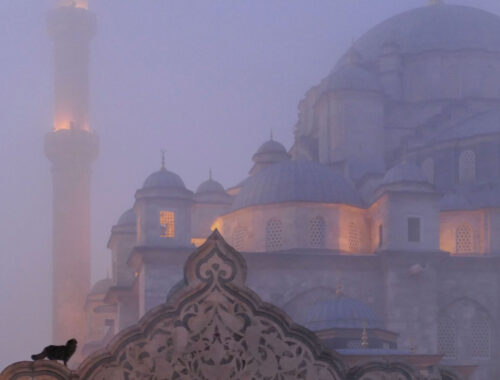
Byen uden navn # 4
2023-08-08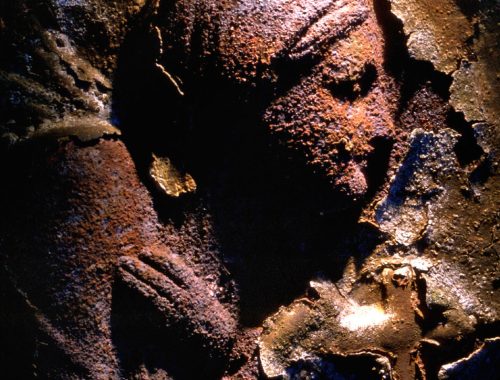
Store Bededag
2023-05-06